Buddha tattoos have become popular for those seeking to express their spiritual beliefs through body art. These tattoos often feature images of the Buddha, the founder of Buddhism, in various poses and are used to symbolize peace, enlightenment, and spiritual growth. This blog will delve into the history of Buddha tattoos, the different available designs, and the symbolism behind them.
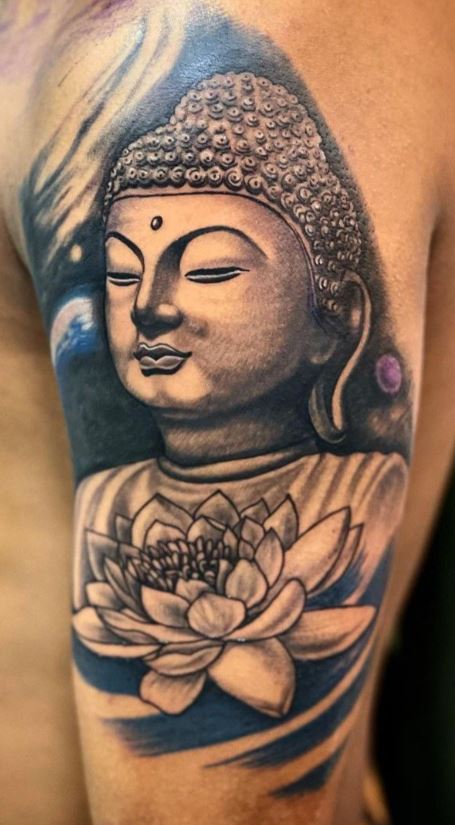
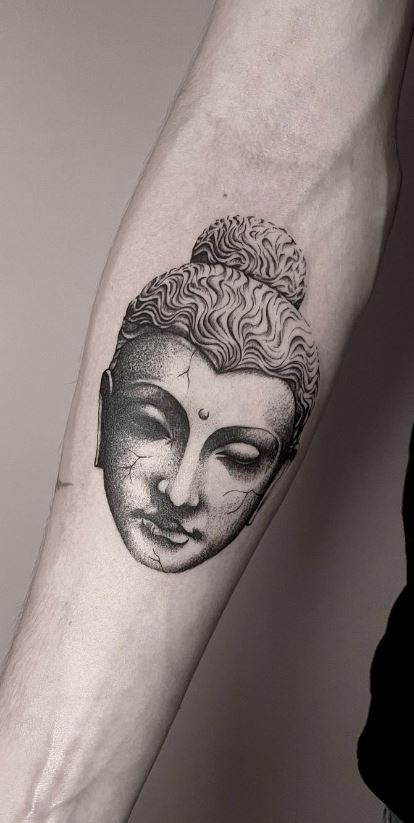
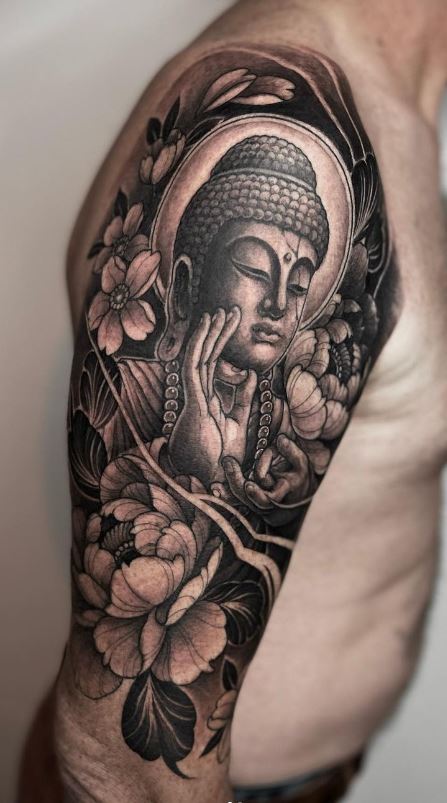
Contents
The History Of Buddha
Siddhartha Gautama, also known as the Buddha, was an ancient Indian prince and spiritual teacher who lived in the eastern part of the Indian subcontinent over 2,500 years ago. He is the founder of Buddhism, one of the world’s largest and oldest religions.
Early life
Siddhartha was born as the prince of a small kingdom in modern-day Nepal. He was raised in luxury and sheltered from the world’s sufferings outside the palace walls. At 29, he ventured out of the palace. He was shocked by the suffering he saw, including old age, sickness, and death. This experience led him to renounce worldly life and become an ascetic monk seeking spiritual enlightenment.
Search for enlightenment
Siddhartha practiced severe asceticism and meditation for six years, but he realized that this path was not leading him to enlightenment. He then adopted a middle way between asceticism and hedonism. One day, while meditating under a bodhi tree, he attained enlightenment and became the Buddha.
Teachings
The Buddha’s teachings focus on the Four Noble Truths, which state that life is full of suffering, that this suffering is caused by desire and attachment, that it is possible to end suffering, and that the path to the end of suffering is the Eightfold path. The Eightfold path consists of the right understanding, right intention, right speech, right action, right livelihood, right effort, right mindfulness, and right concentration.
The life and teachings of Siddhartha Gautama continue to influence people worldwide to this day, and Buddhism remains one of the world’s largest and most influential religions. Despite the passage of time, the Buddha’s message of compassion, wisdom, and the path to enlightenment resonates with people seeking spiritual fulfilment and understanding.
The Symbolism Behind Buddha Tattoos
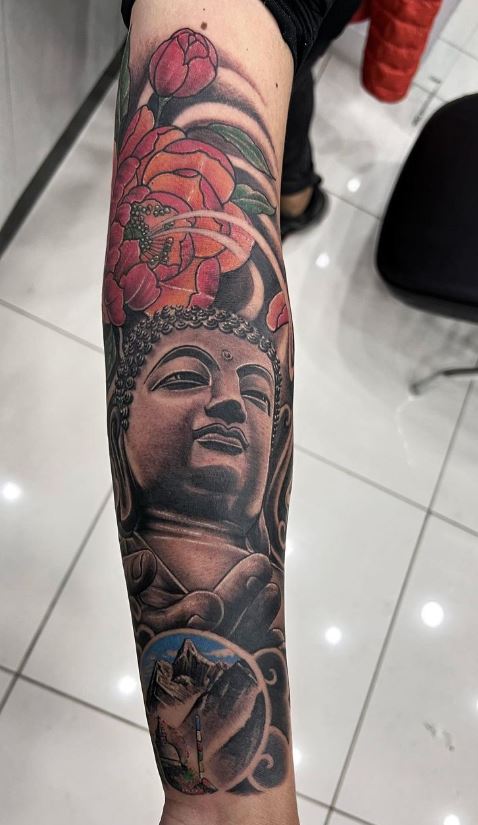
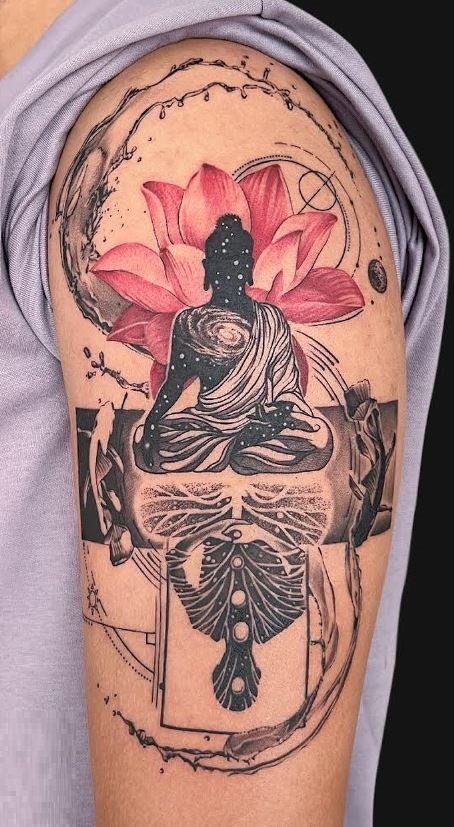
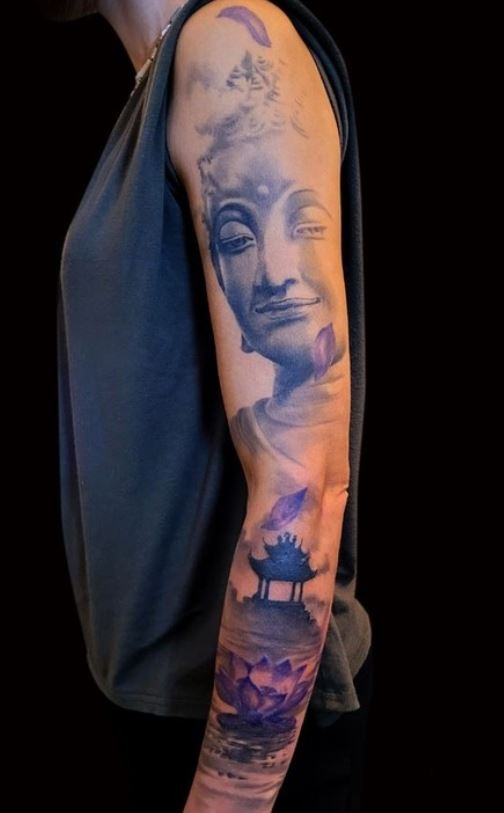
Buddha tattoos hold deep meaning for those who choose to have them. Some of the most common interpretations of Buddha tattoos include the following:
Inner peace and enlightenment
The Buddha is often depicted in a meditative pose, symbolizing the pursuit of inner peace and spiritual enlightenment. This tattoo can remind you to stay centred and focused on the present moment.
Compassion and wisdom
The teachings of the Buddha emphasize compassion and wisdom, and a Buddha tattoo can symbolize these values. It can remind the wearer to approach life with an open heart and a clear mind.
Overcoming obstacles
The Buddha’s journey to enlightenment involved overcoming many obstacles and difficulties. A Buddha tattoo can symbolize perseverance and determination. It reminds the wearer to keep pushing forward despite any challenges they may face.
Good luck and protection
In some cultures, people believe that Buddha tattoos can bring good luck and protection to the wearer. As a benevolent and powerful figure, the Buddha guides and supports many people.
Personal growth
Buddhism emphasizes the importance of personal growth and self-improvement. A Buddha tattoo can symbolize this journey, reminding the wearer to continually strive for self-awareness and self-discovery.
Spiritual connection
For many people, getting a Buddha tattoo is a way to connect with their spirituality and express their beliefs. It can serve as a symbol of their commitment to the teachings of Buddhism and their spiritual path.
These are just a few of the many meanings associated with Buddha tattoos. Ultimately, the significance of a Buddha tattoo is personal and can vary from person to person based on individual beliefs and experiences.
Designs of Buddha Tattoos
Many different designs are available for Buddha tattoos, each with unique meaning and symbolism. Some of the most popular designs include:
Traditional Buddha
A classic and timeless design, the traditional Buddha portrait features the Buddha in a peaceful and meditative pose, often with closed eyes and a serene expression.
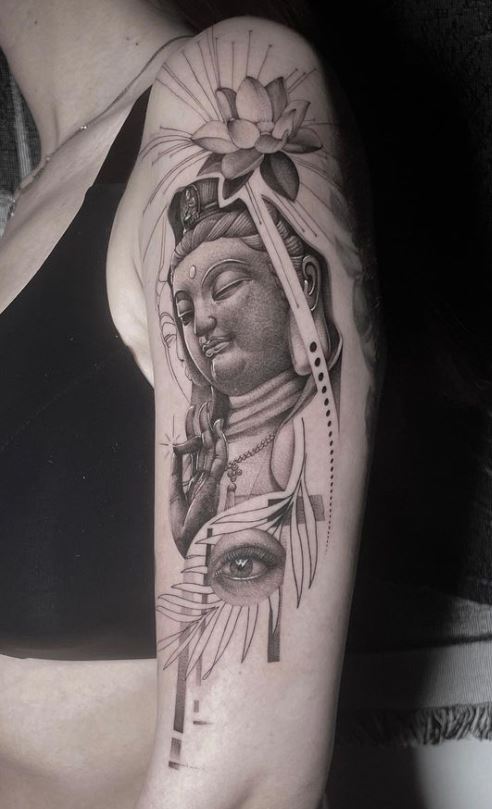
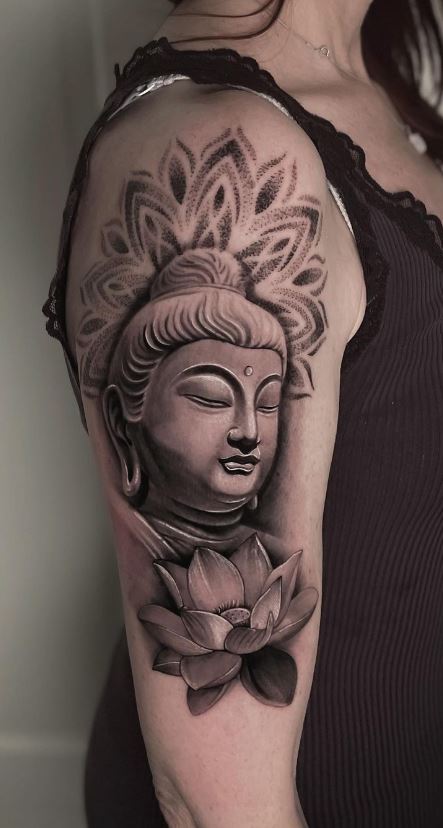
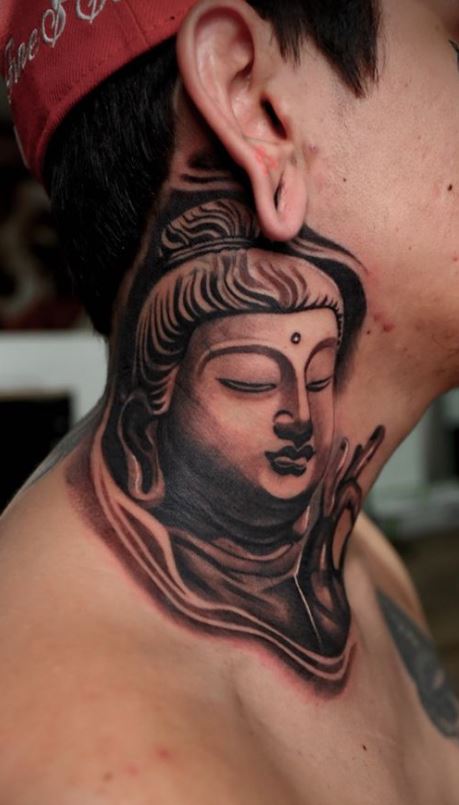
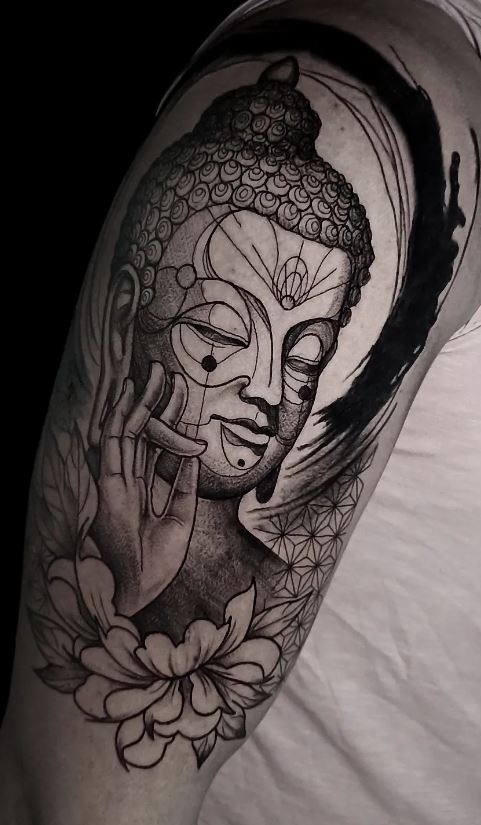
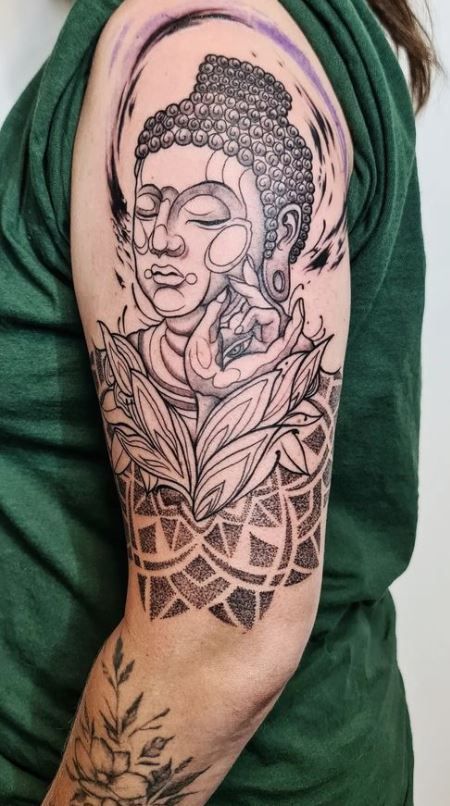
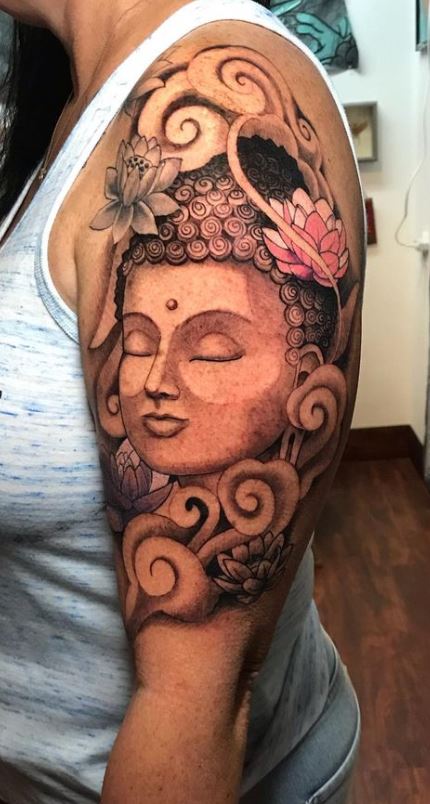
Laughing Buddha
This design features the Buddha in a joyful, overweight, and pleasant form. The Laughing Buddha symbolizes happiness, prosperity, and good luck.

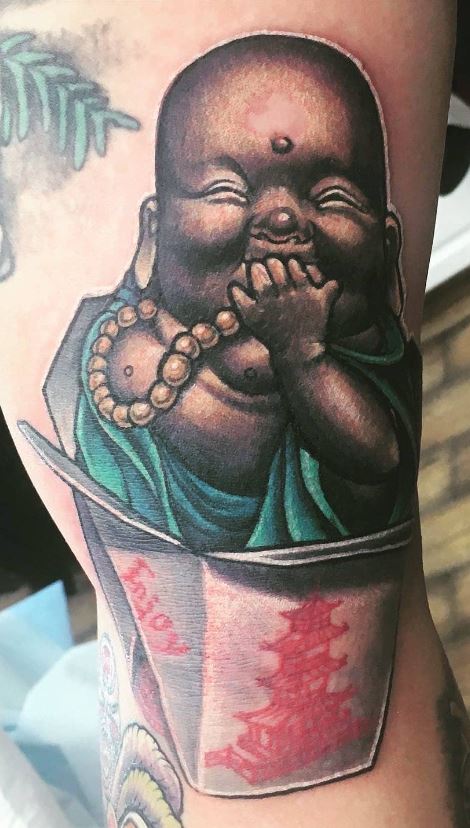
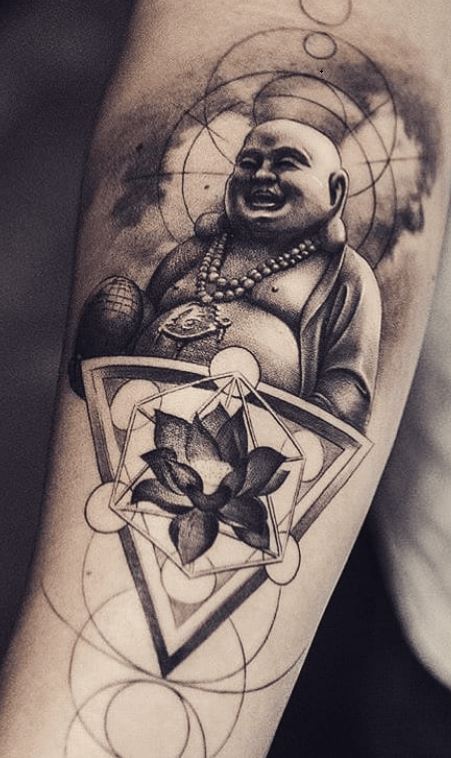
Lotus Flower Buddha
This design features the Buddha sitting or standing on a lotus flower, a common Buddhist symbol. The lotus represents enlightenment and purity as it grows in mud but rises above the surface to bloom into a beautiful flower.
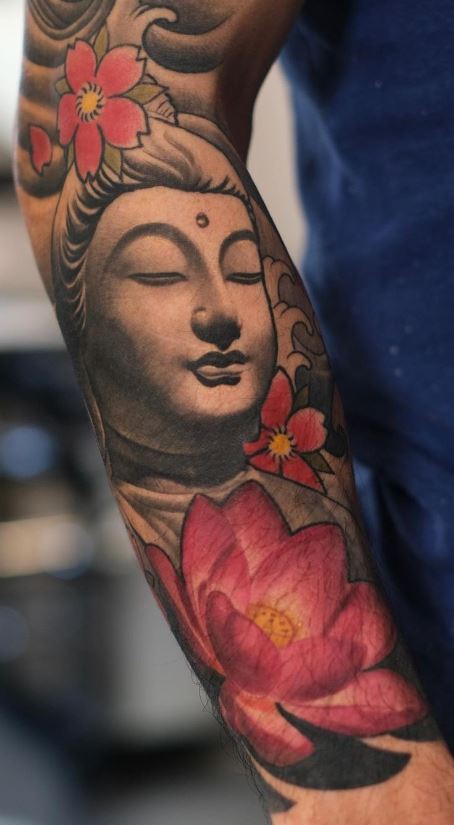
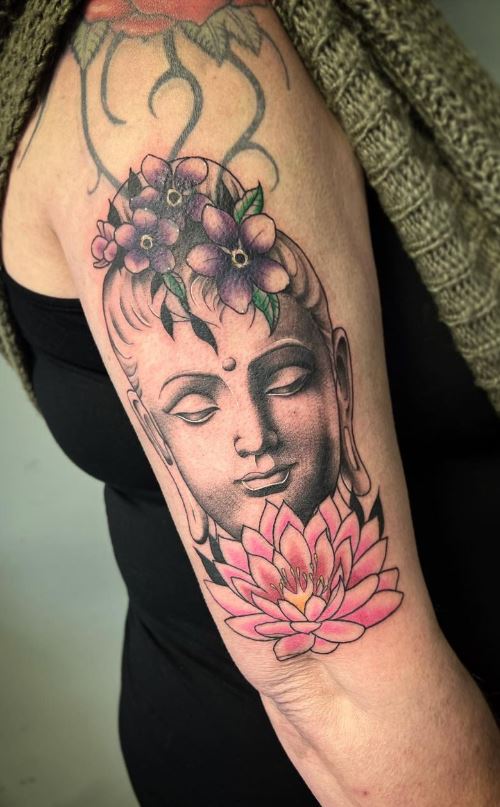
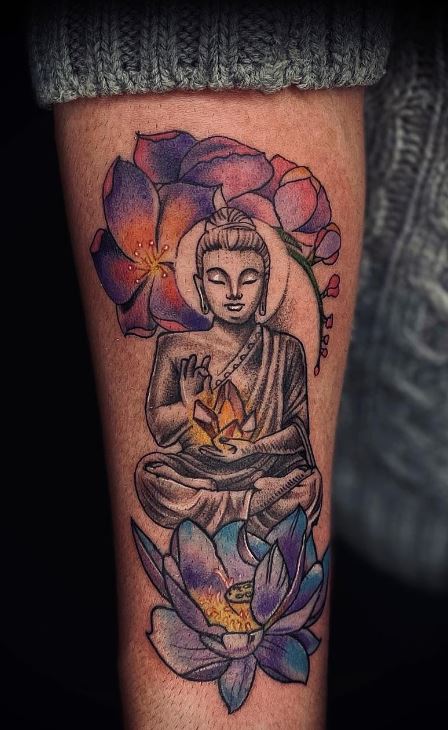
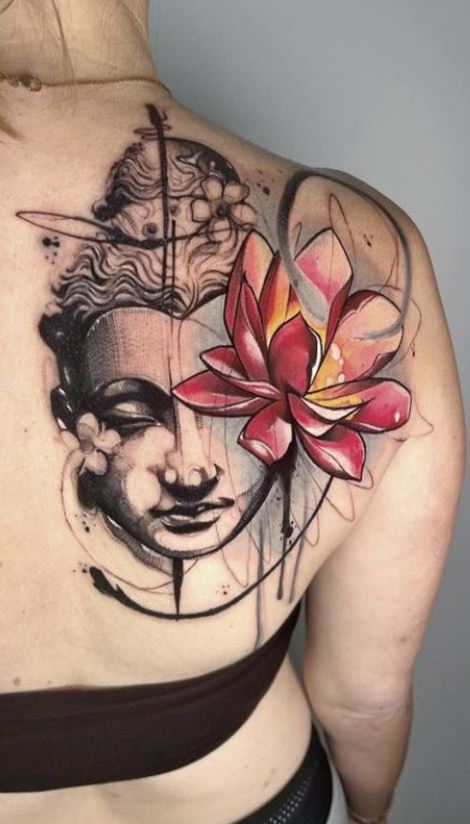
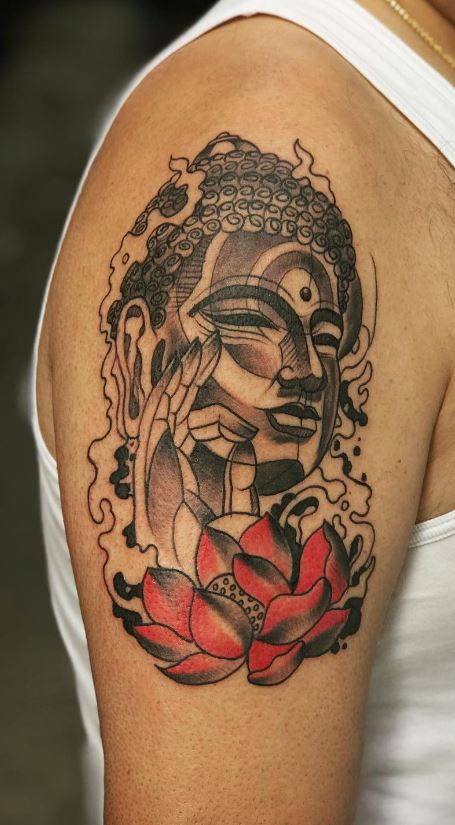
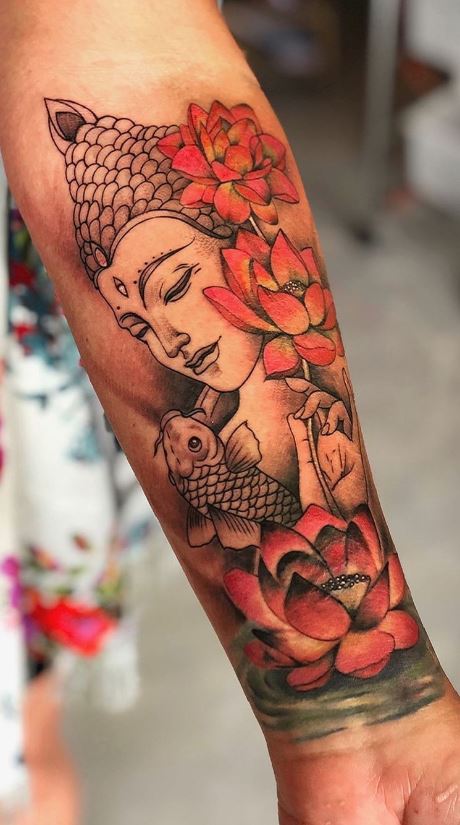
Mantra Buddha
This design features the Buddha with a mantra, a word or phrase people repeat in meditation, written around him. Mantras have a calming and grounding effect, and this design symbolizes the power of mindfulness and meditation.
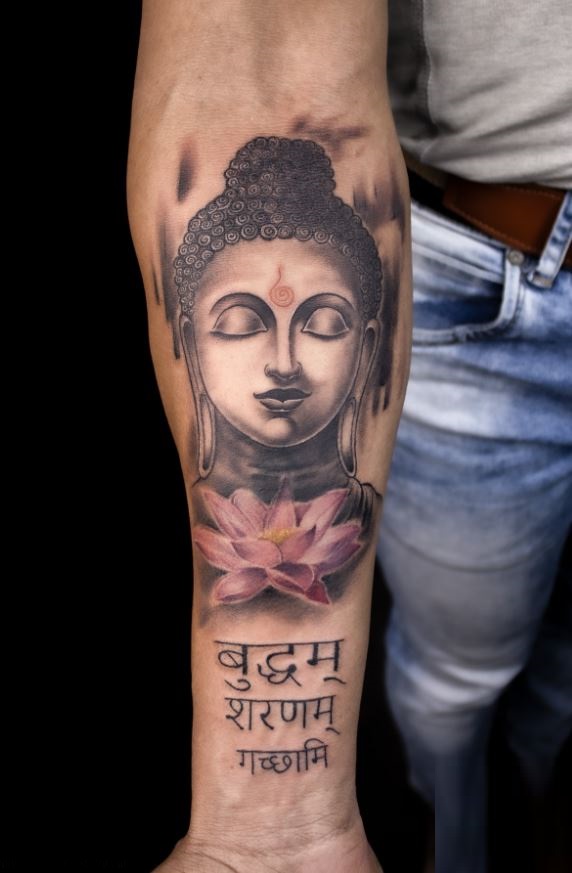
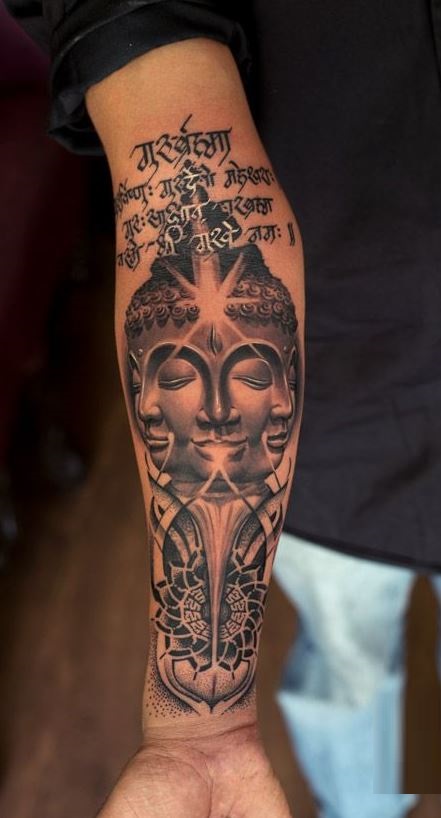
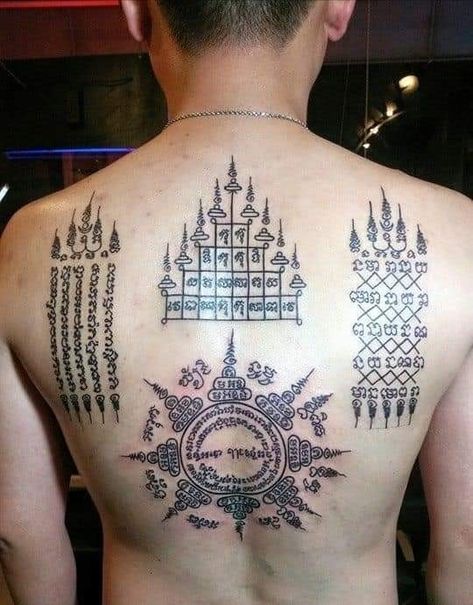
Bodhi Tree Buddha
This design features the Buddha sitting under the Bodhi Tree, where he achieved enlightenment. The Bodhi Tree symbolizes the path to enlightenment, and this design represents the journey toward spiritual growth and understanding.
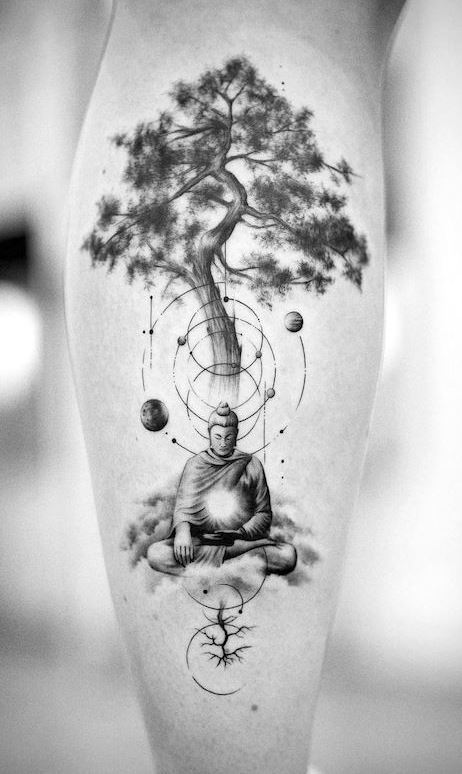
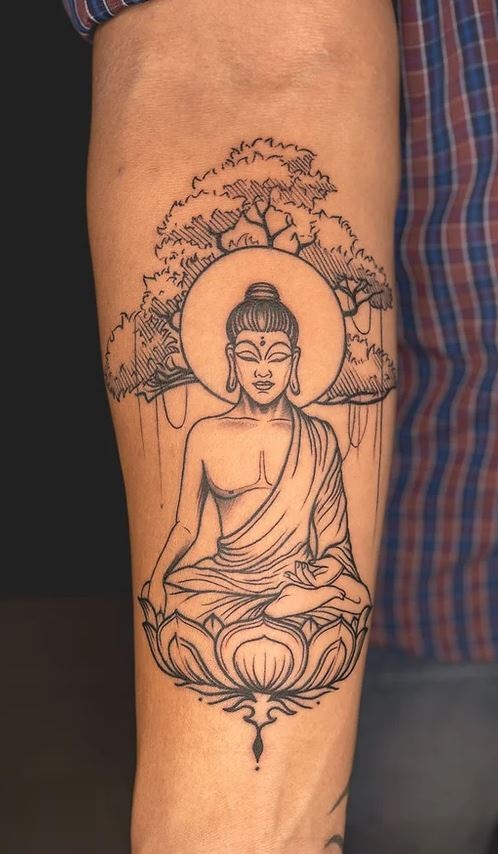
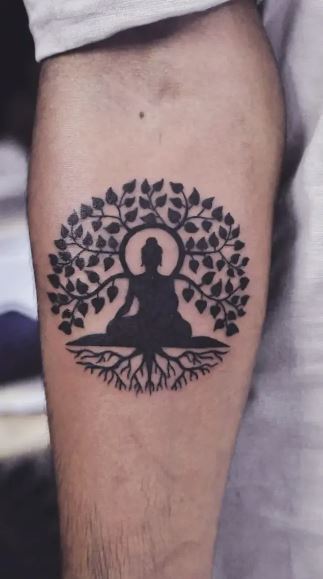
Abstract Buddha Tattoos
For those who want a more modern or abstract take on the traditional Buddha design, abstract Buddha tattoos often feature abstract interpretations of the Buddha’s image, such as his silhouette, hands, or head.

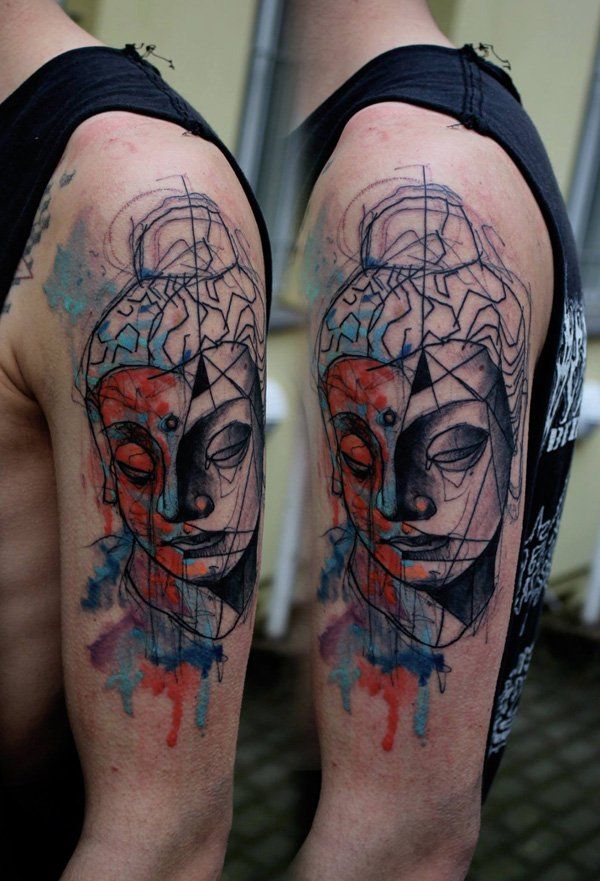
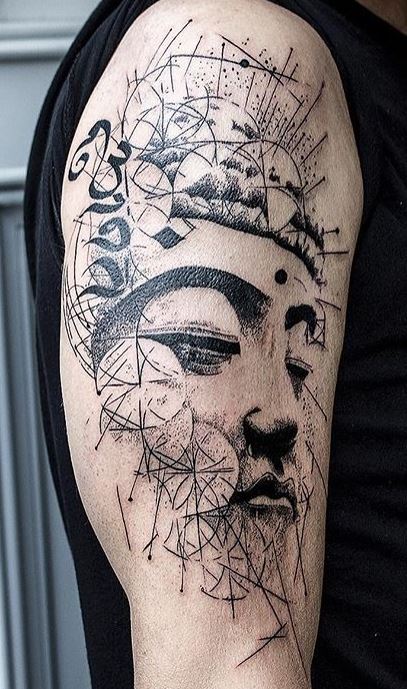
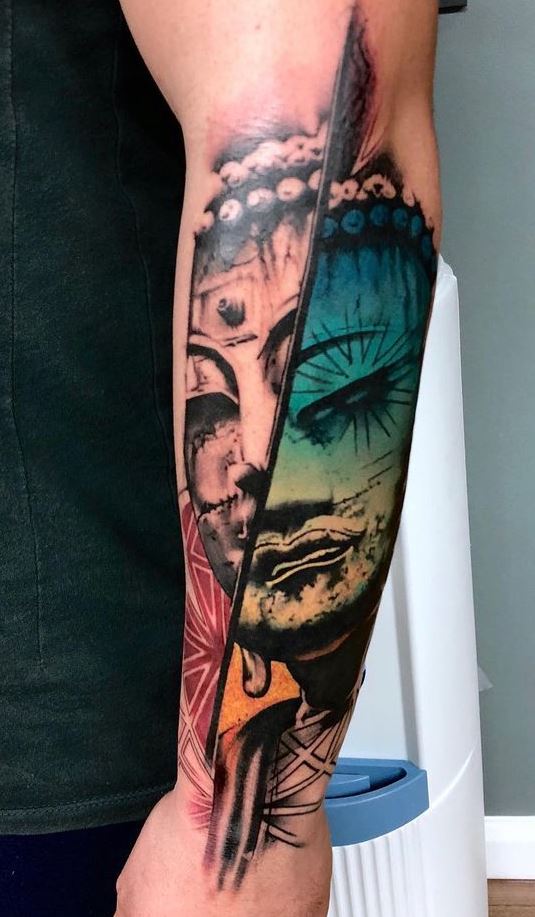
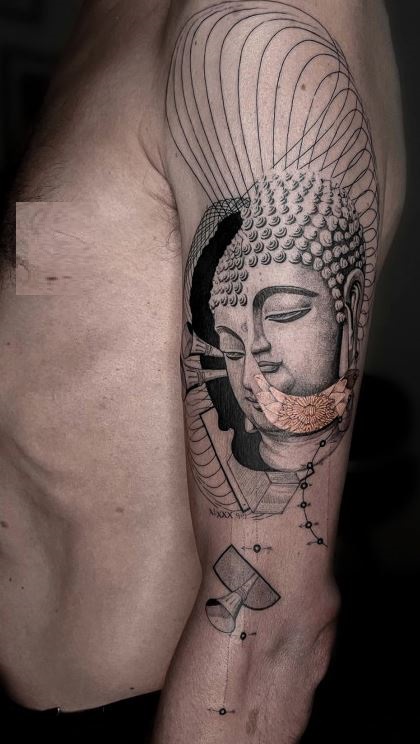
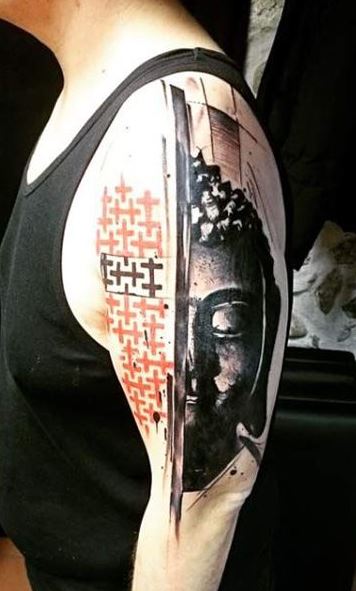
Colourful Buddha Tattoos
For a more vibrant and eye-catching design, colourful Buddha tattoos can feature bright, bold colours and intricate details. These tattoos often showcase the Buddha uniquely and creatively, making them a popular choice for those seeking a more artistic tattoo.
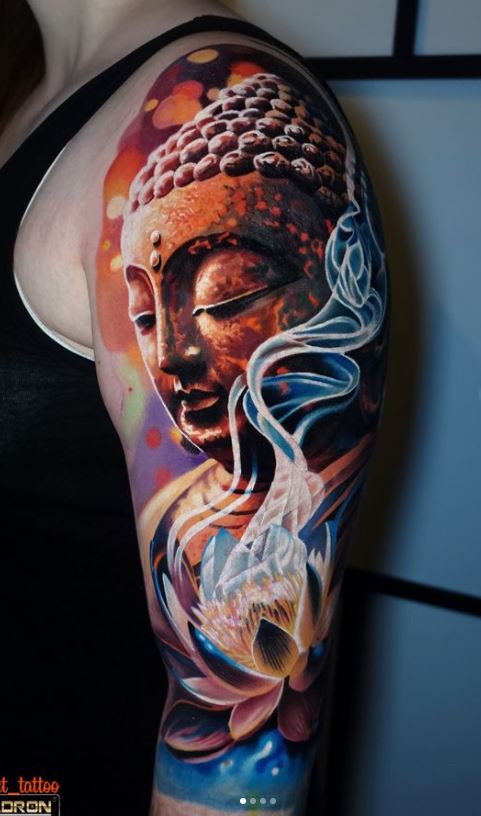
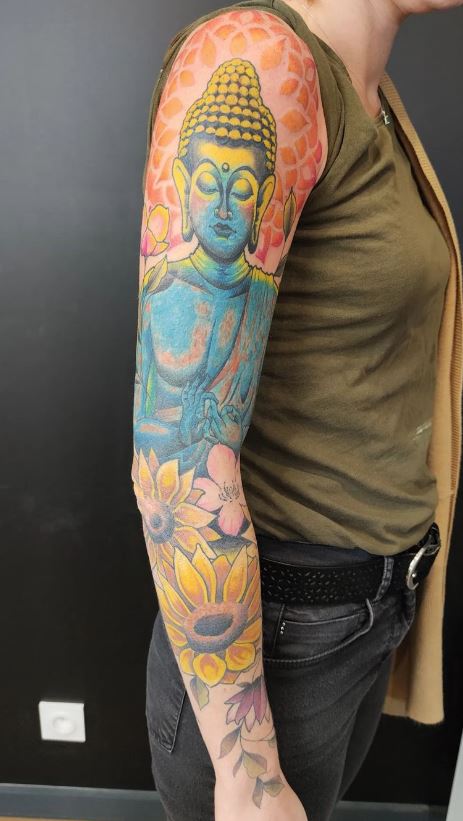
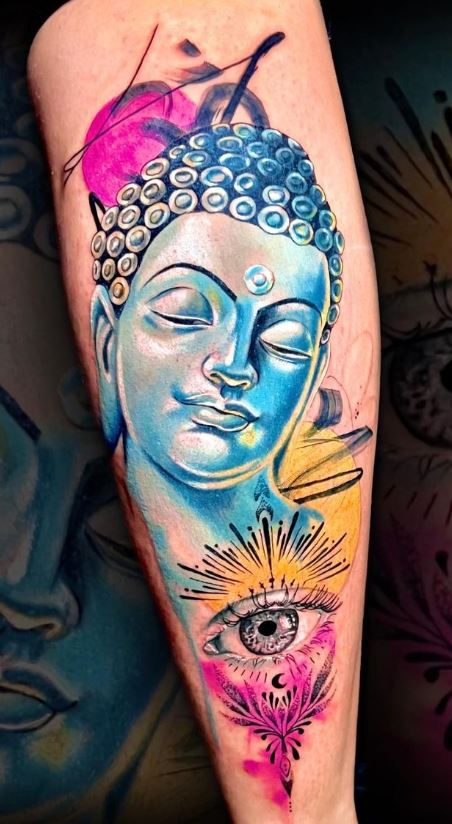
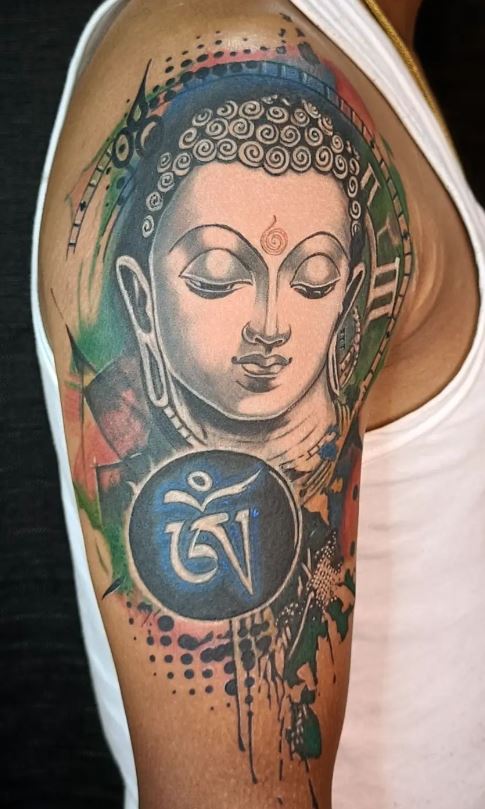
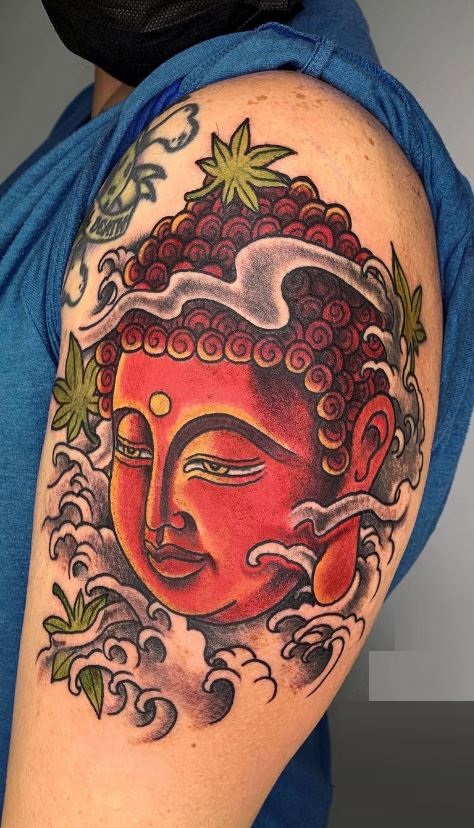
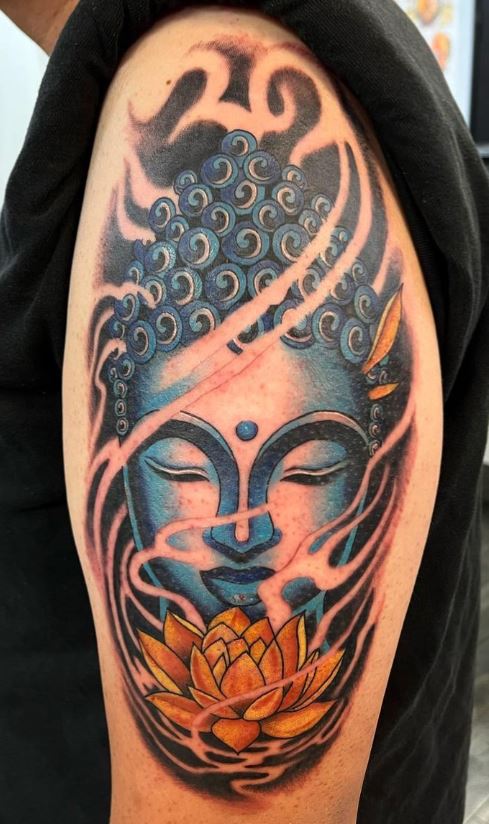
Baby Buddha Tattoos
A baby Buddha tattoo can symbolize innocence, purity, and the potential for enlightenment. The baby Buddha, also known as the “Buddha-to-be,” represents the beginning of the Buddha’s journey to enlightenment. You can design a Baby Buddha tattoo in various traditional and contemporary styles. They may depict a chubby, smiling baby sitting in a lotus flower, surrounded by other symbols of Buddhism, such as prayer beads, the dharma wheel, or lotus petals.
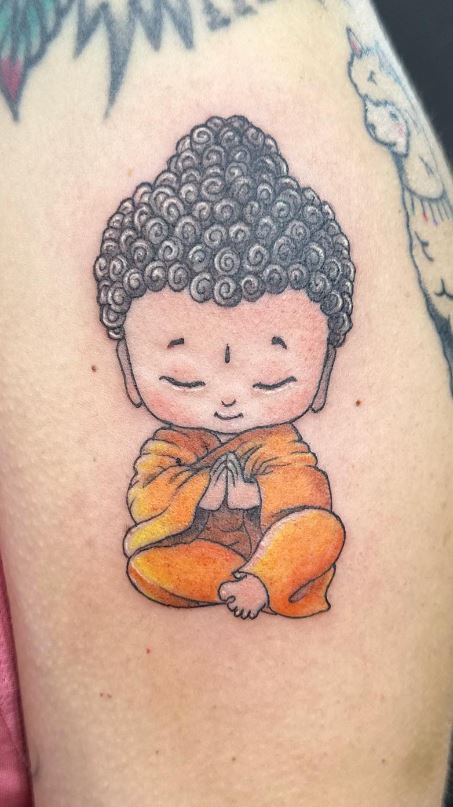
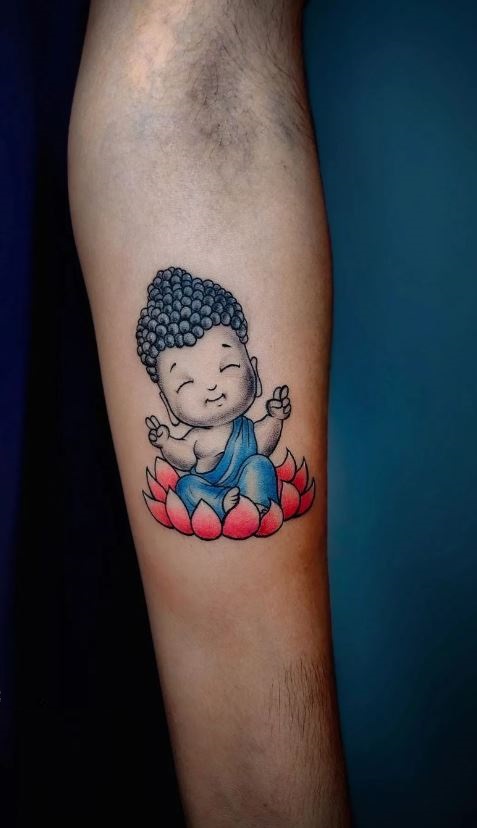
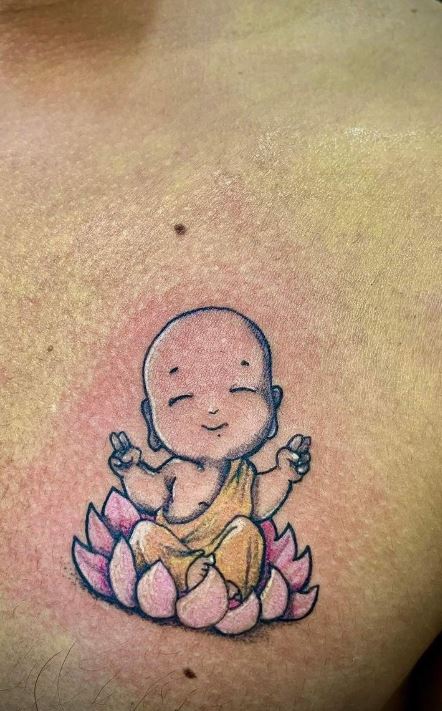
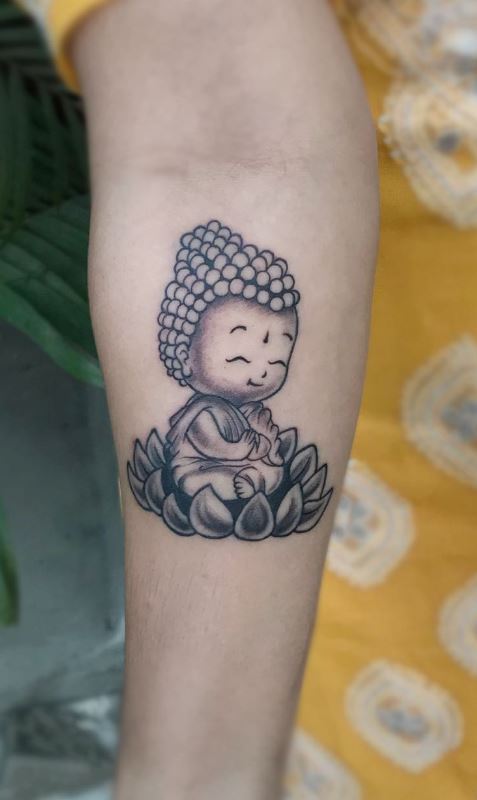
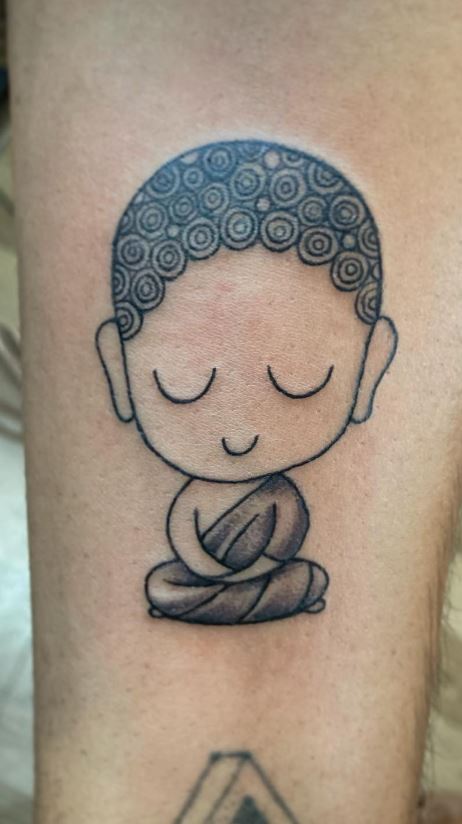
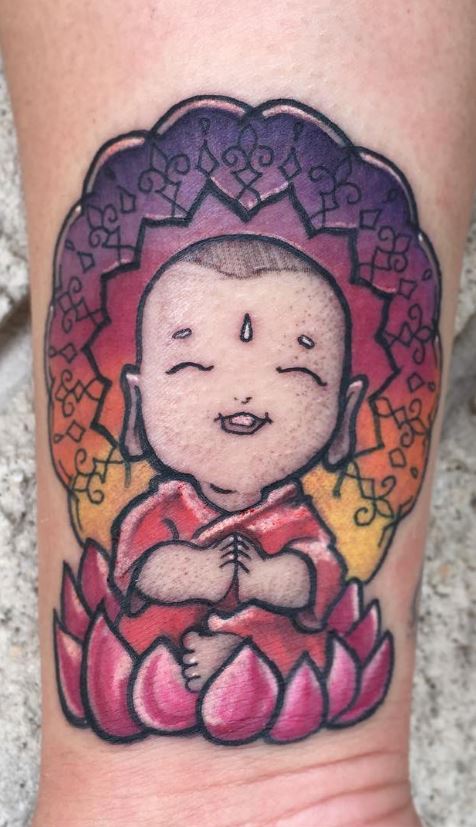
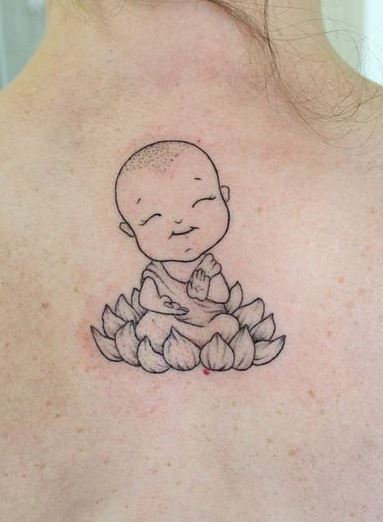
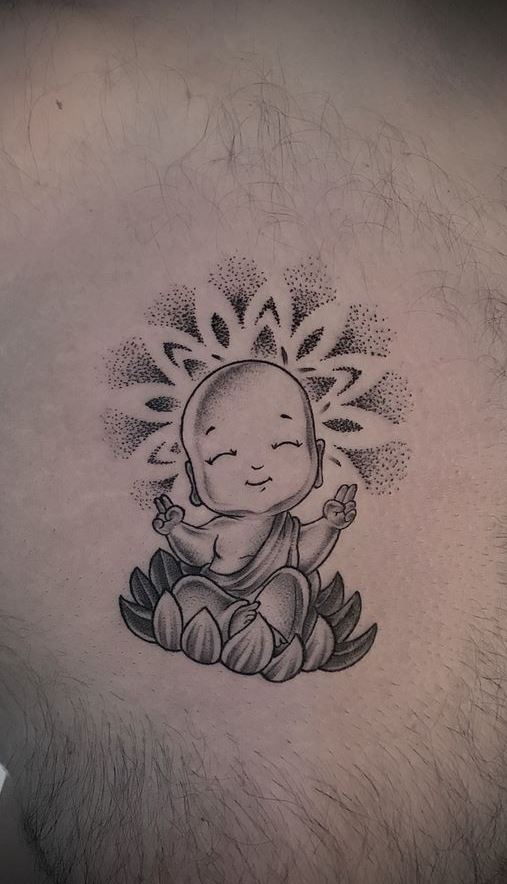
These are just a few of the many design ideas available for Buddha tattoos. Your design will depend on your style, the tattoo’s placement, and your beliefs and preferences.
Difference Between Indian and Chinese Buddha
Despite Buddha’s reverence in both Chinese and Indian cultures, their representation of him is different. Here are some key differences between the Chinese and Indian Buddha:
Appearance: The appearance of the Buddha can vary between Chinese and Indian depictions. The Buddha in Chinese artwork has a rounder, plumper face and a large belly, symbolizing prosperity and happiness. In Indian painting, the Buddha is often depicted with a more slender and athletic build, reflecting his ascetic lifestyle and spiritual pursuits.
Iconography: There is a unique iconography and symbolism associated with the Buddha in China and India due to different cultural influences and religious practices. Chinese culture often depicts the Buddha holding an umbrella as a symbol of protection and nobility. The Indian culture portrays him as an ascetic monk with a begging bowl, reflecting his asceticism.
Cultural significance: In China, the Buddha is often associated with Taoism and is revered for his teachings on compassion and wisdom. In India, he is seen as the founder of Buddhism and is revered for his path to enlightenment. These differing cultural perspectives have led to unique interpretations of the Buddha’s life and teachings in each country.
While there are differences between the Chinese and Indian depictions of the Buddha, both cultures revere him as a spiritual teacher and guide. Regardless of the cultural context, the Buddha’s teachings emphasize compassion, wisdom, and the path to enlightenment. These themes are common to Chinese and Indian interpretations of his life and legacy.
Buddha Tattoos Placement
You can place Buddha tattoos on various body parts, each with its symbolic meaning. Some common placement options include:
Arm: A Buddha tattoo on the upper arm can symbolize strength, protection, and a solid connection to Buddhism.
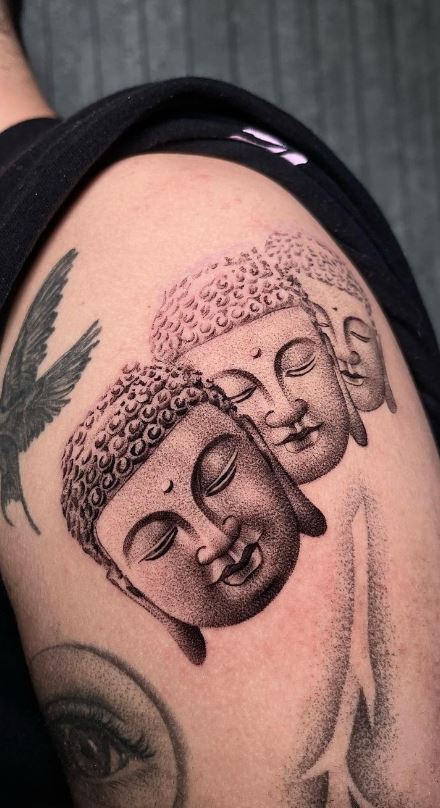
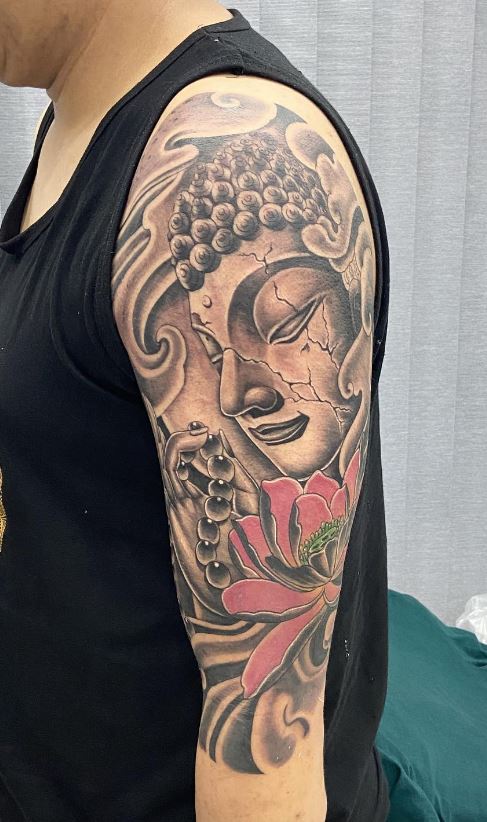
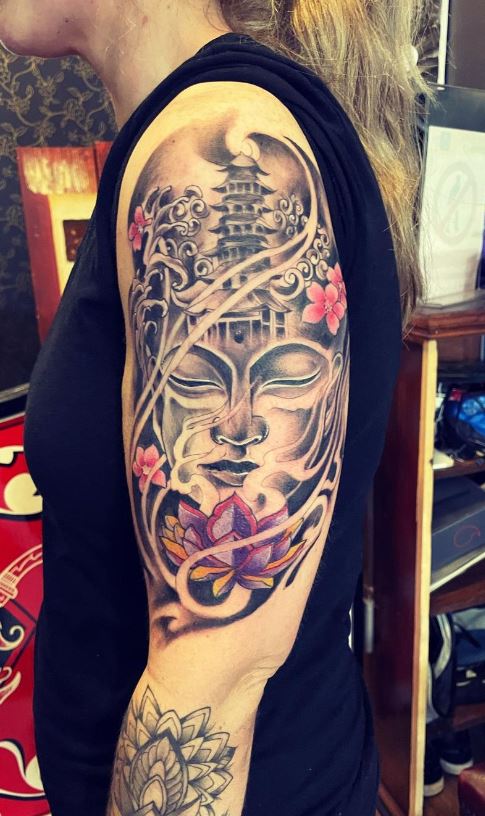
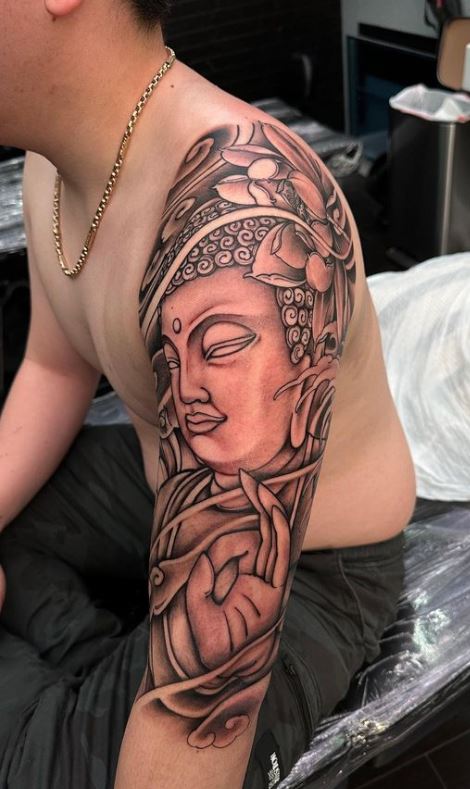
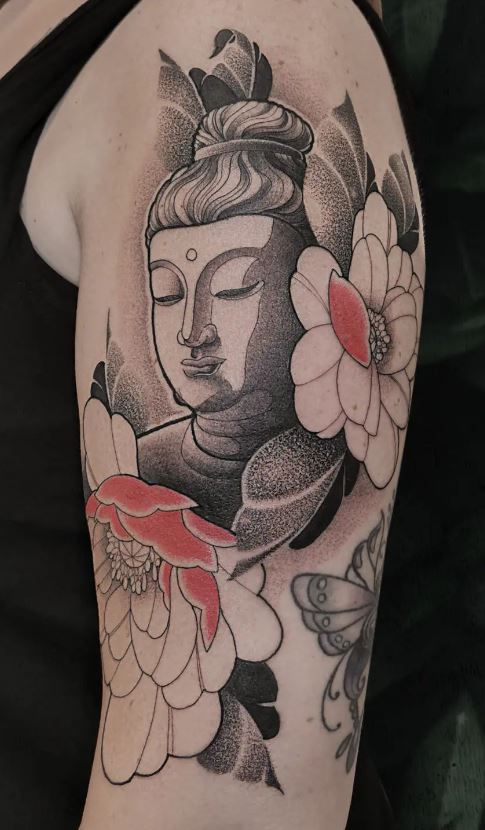
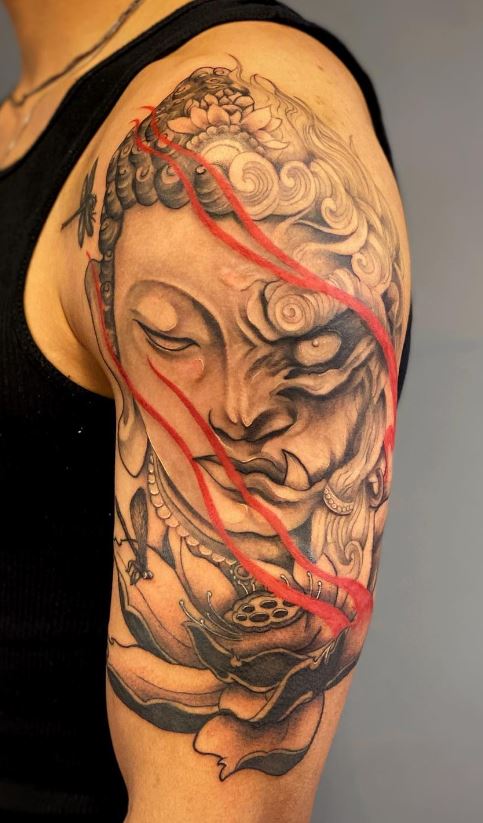
Chest: A chest tattoo can symbolize a person’s inner spiritual journey and connection to the Buddha’s teachings.
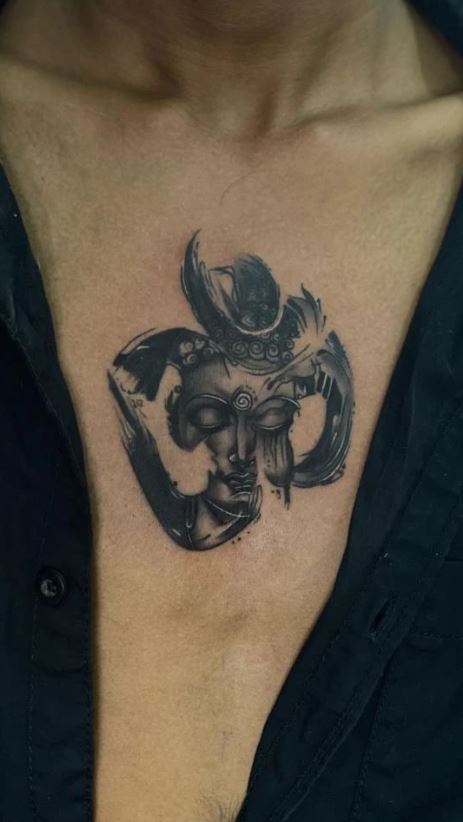
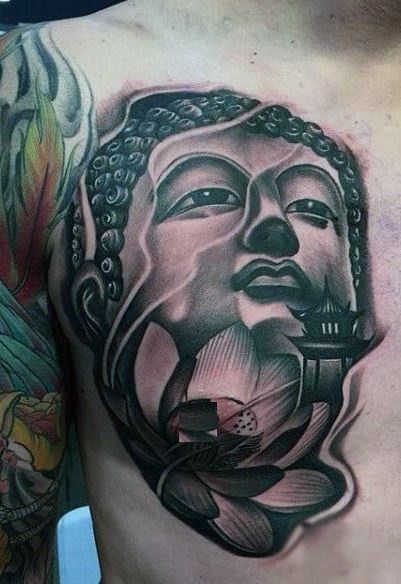
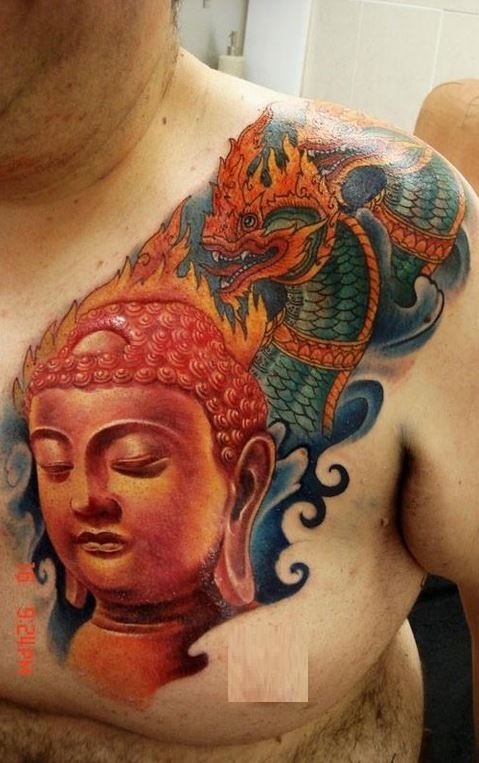
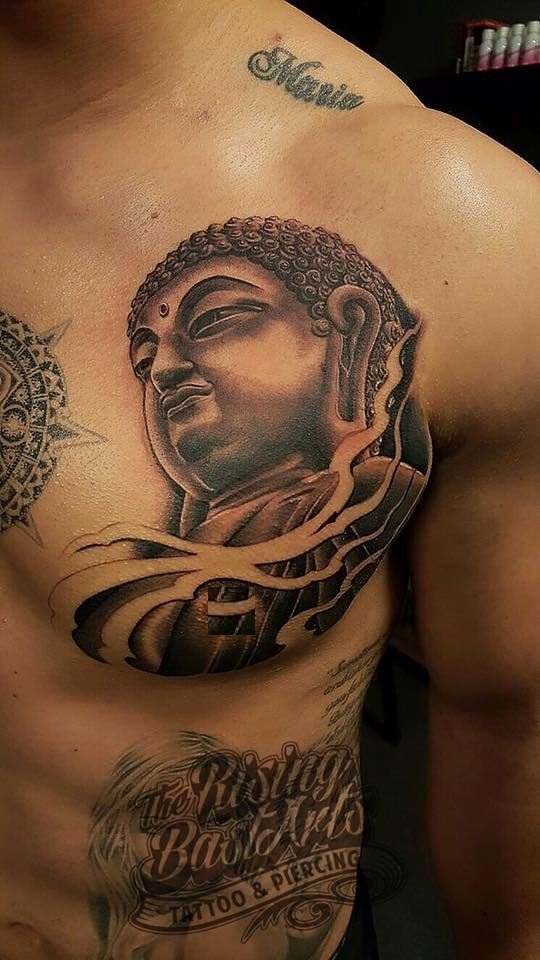
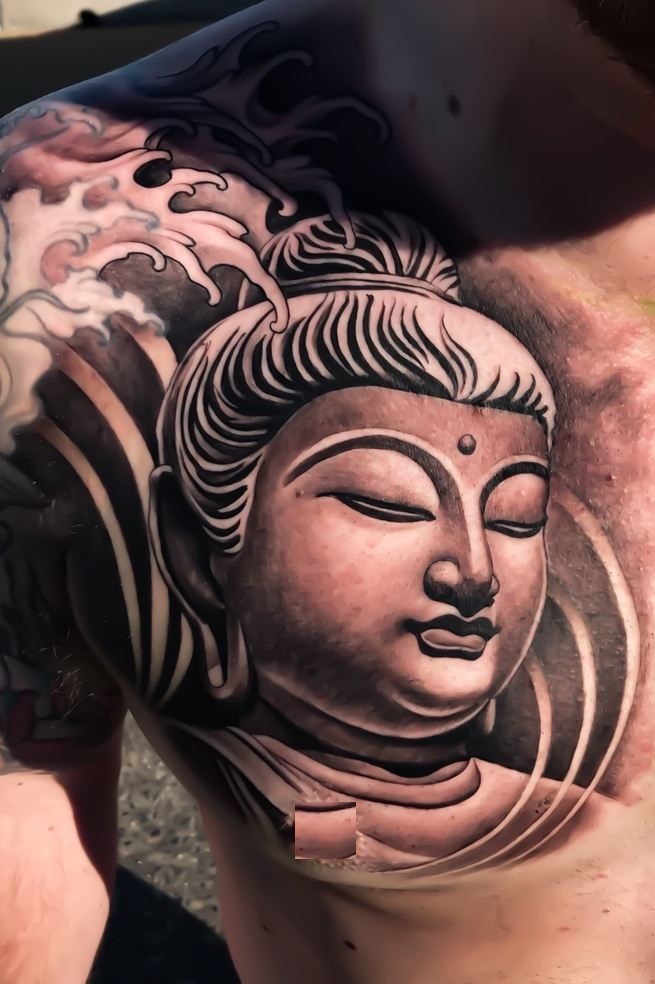
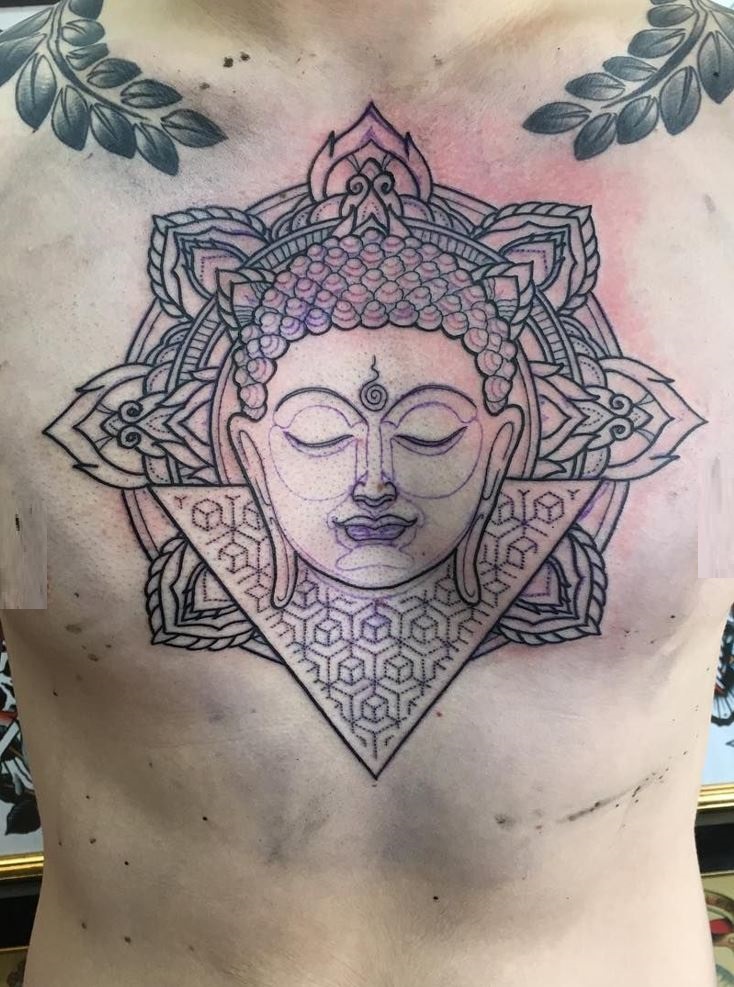
Back: A Buddha tattoo on the back can symbolize one’s path in life and the pursuit of enlightenment.
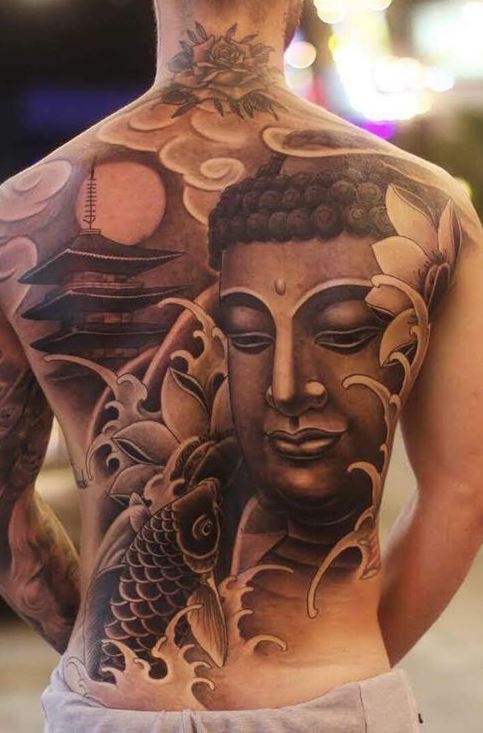
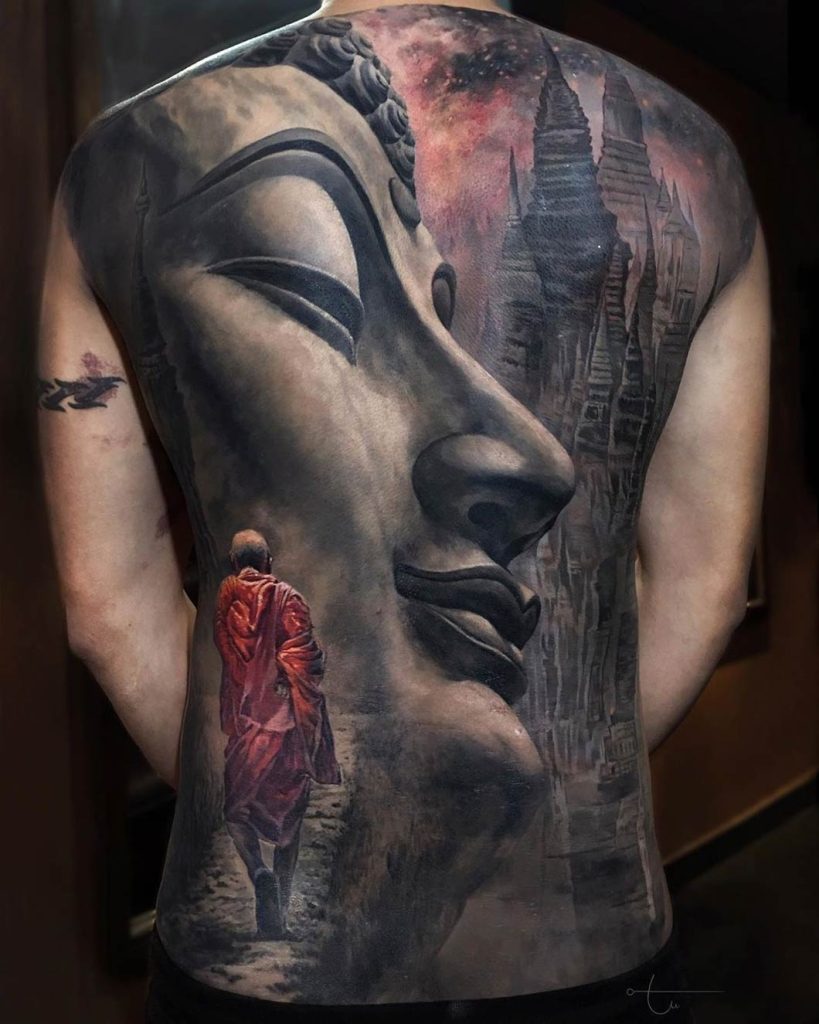
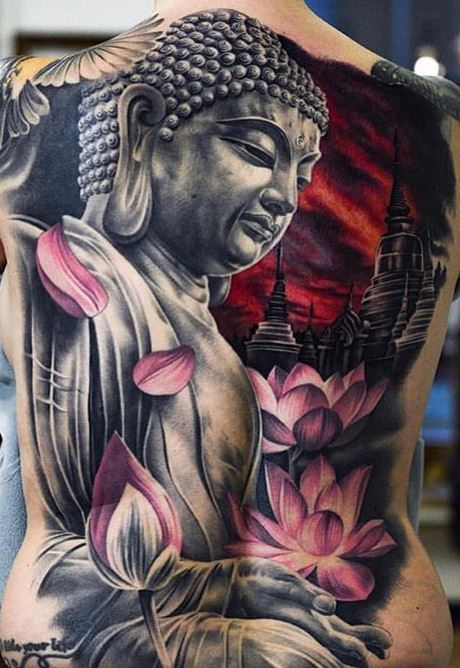
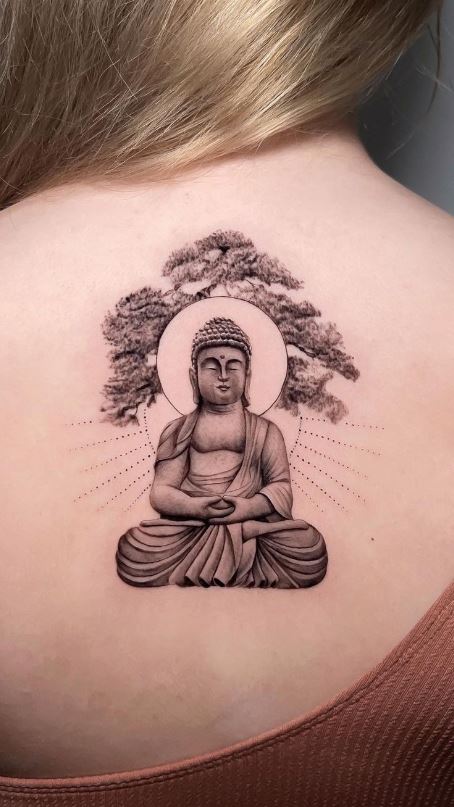
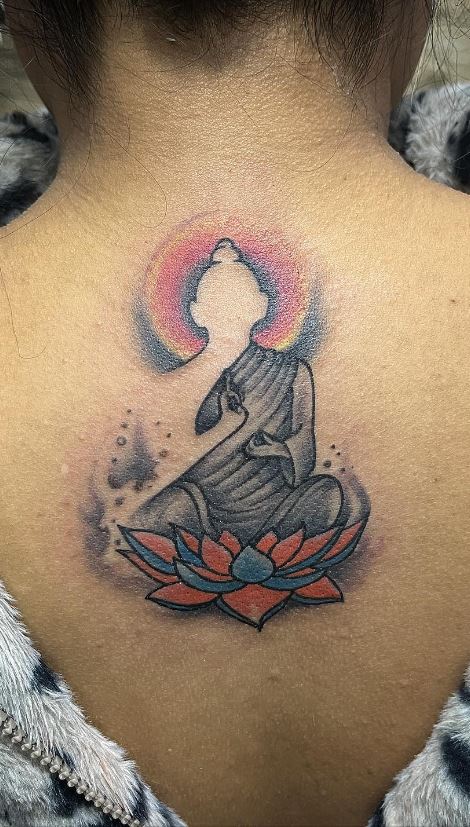
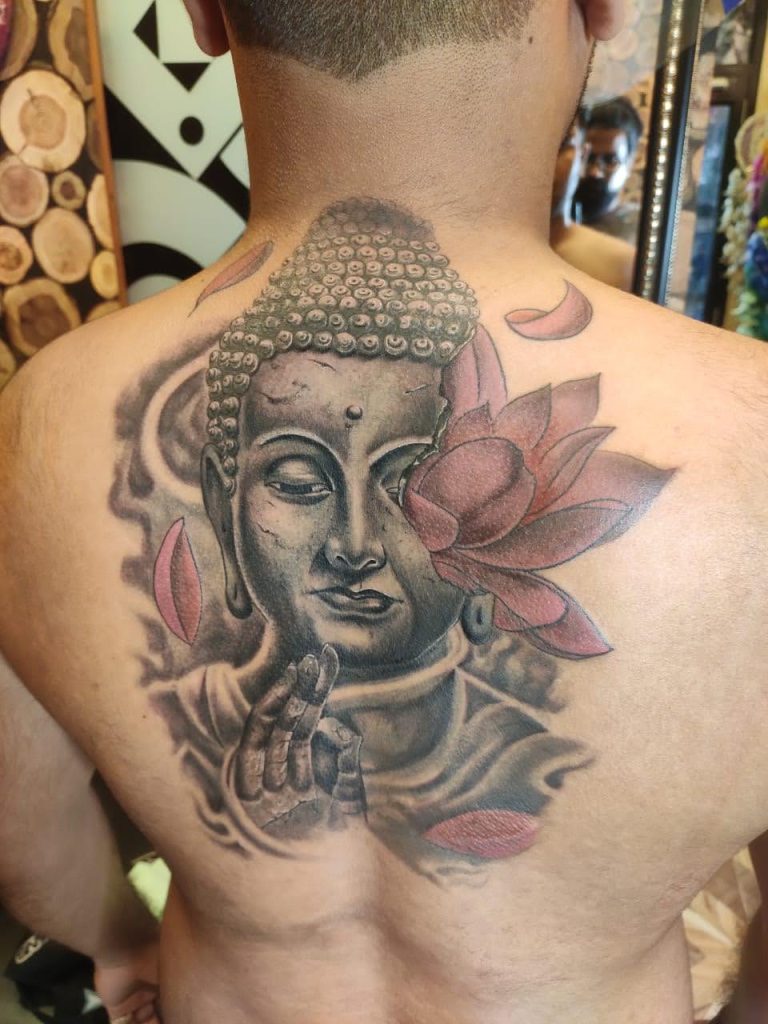
Thigh: A thigh tattoo can symbolize stability and grounding, reflecting the Buddha’s teachings on balance and inner peace.
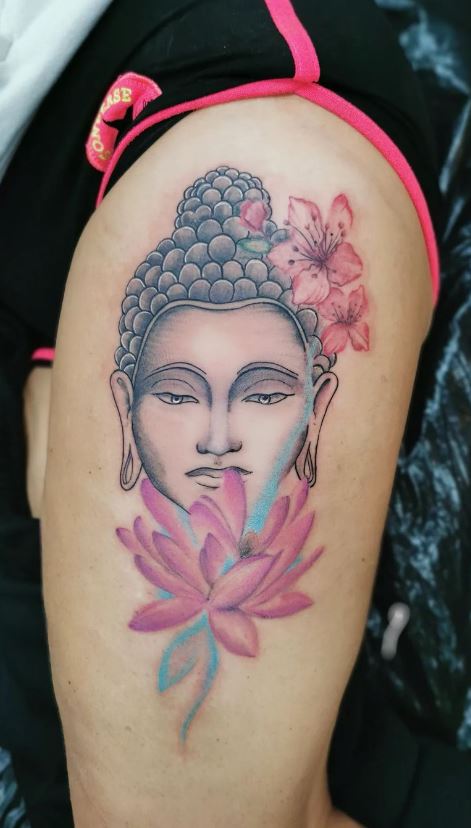
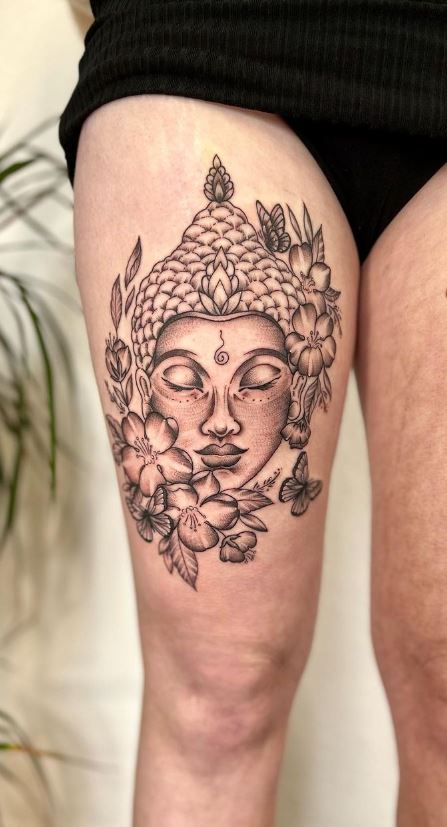
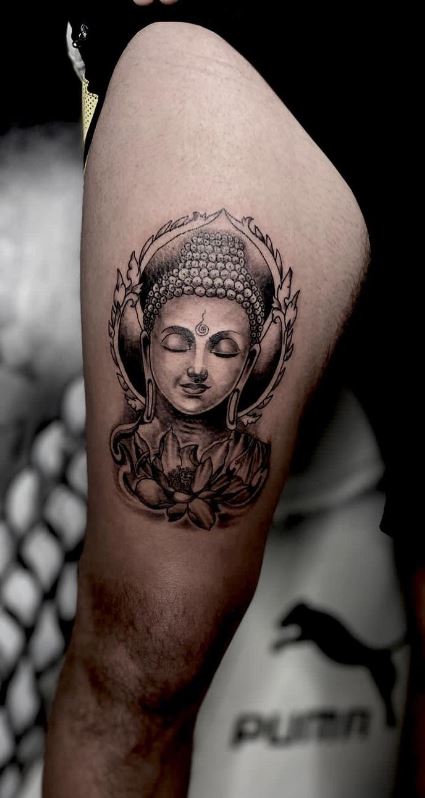
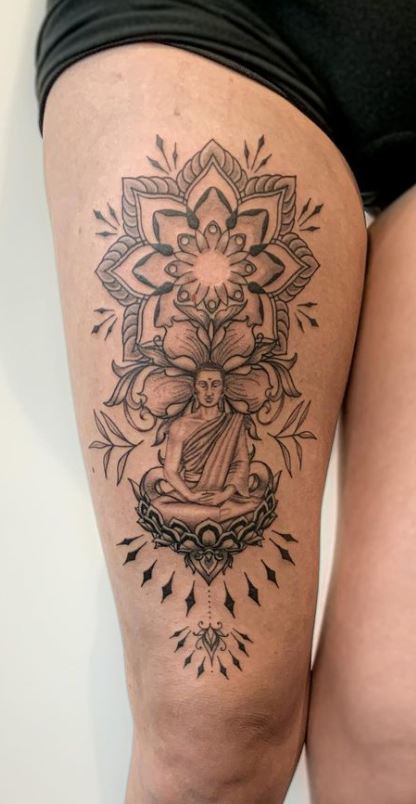
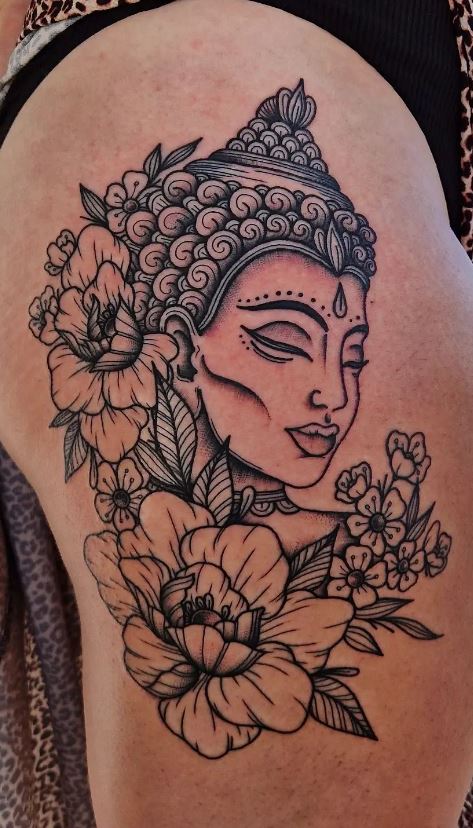
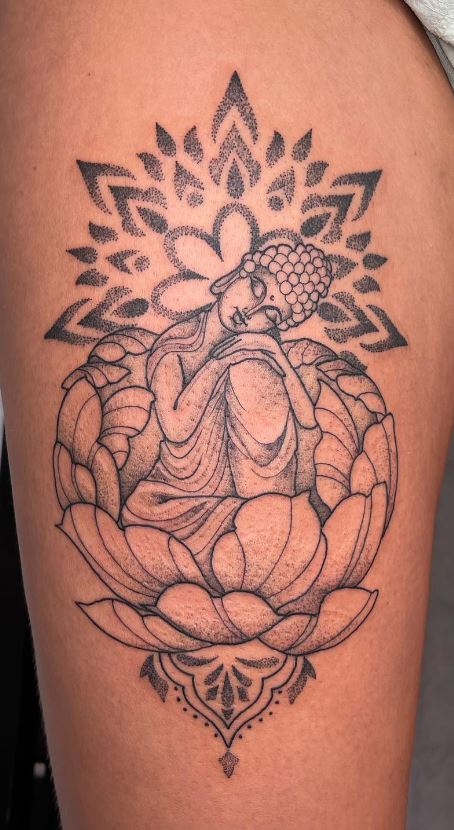
Shoulder: A shoulder tattoo can symbolize the burdens and responsibilities one carries in life, as well as their commitment to the Buddha’s teachings.
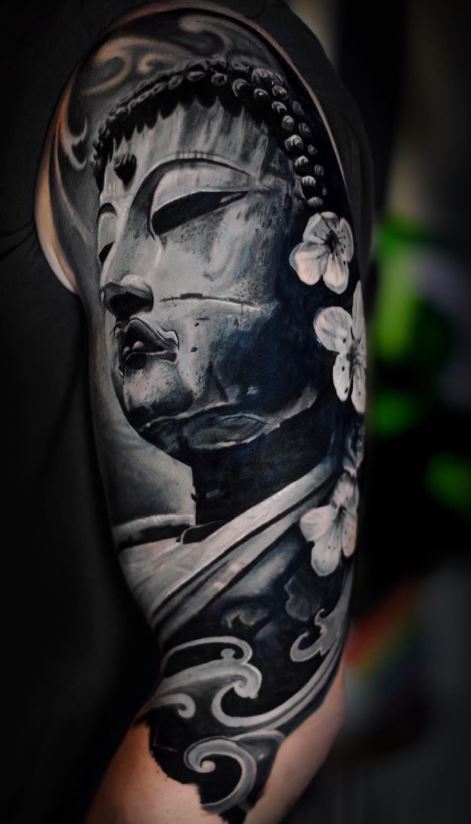
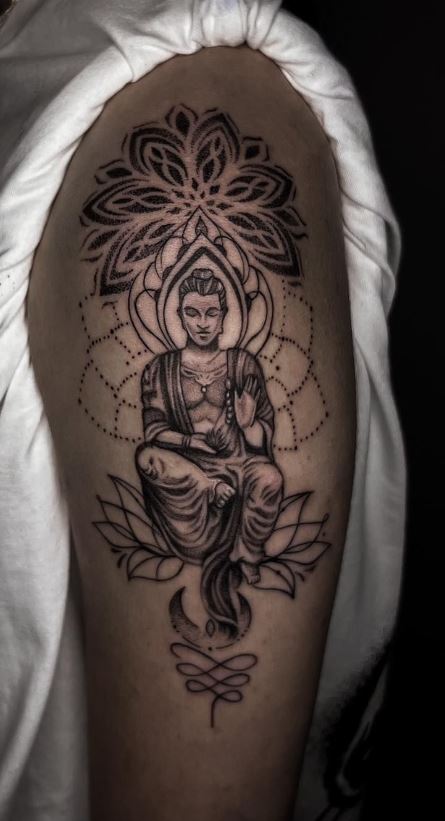
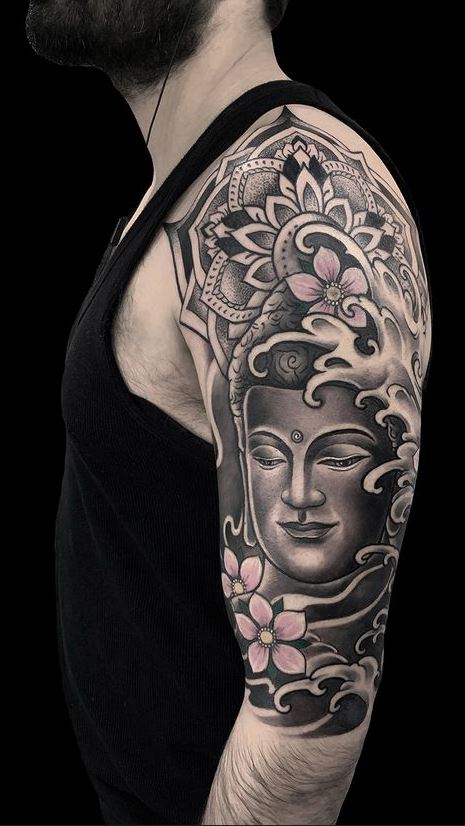
Ribcage: A ribcage tattoo can symbolize the wearer’s heart and their deep connection to the Buddha’s teachings.
Bicep: A bicep tattoo can symbolize the wearer’s strength, power, and commitment to the Buddha’s teachings.
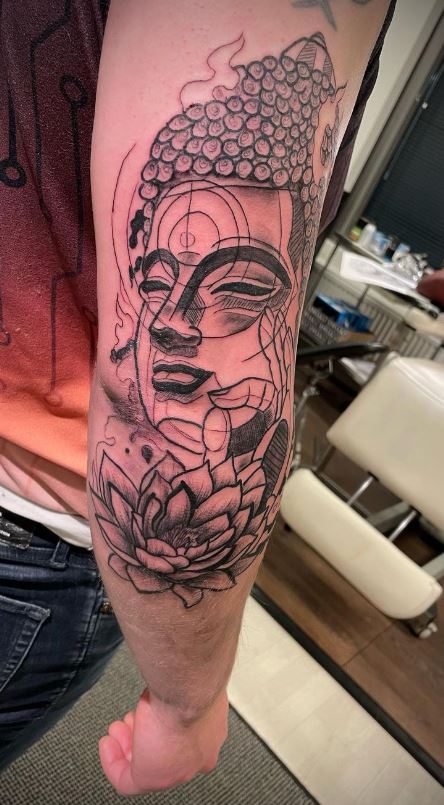
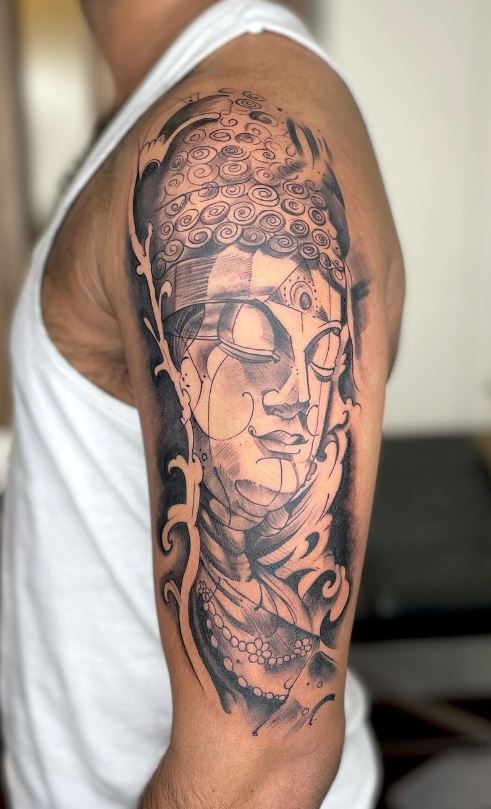
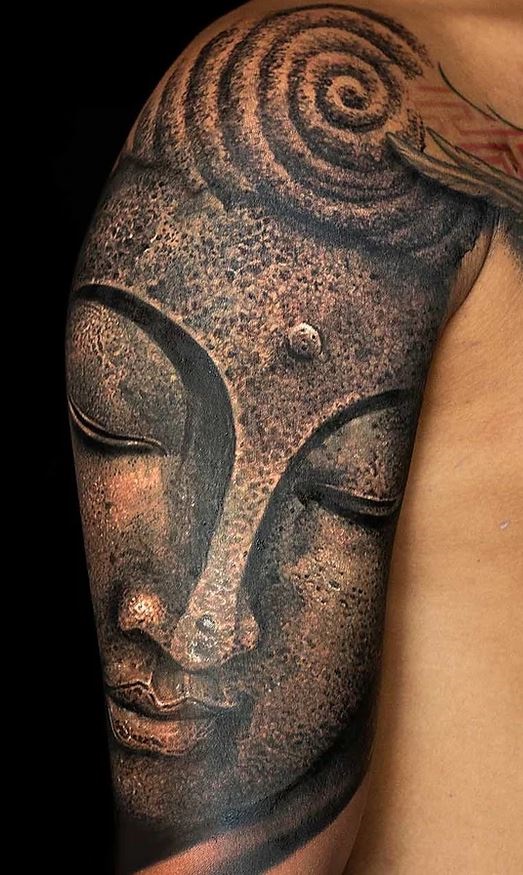
Placing a Buddha tattoo is a personal choice and ensures it aligns with the individual’s beliefs and values.
Various Buddha Tattoos
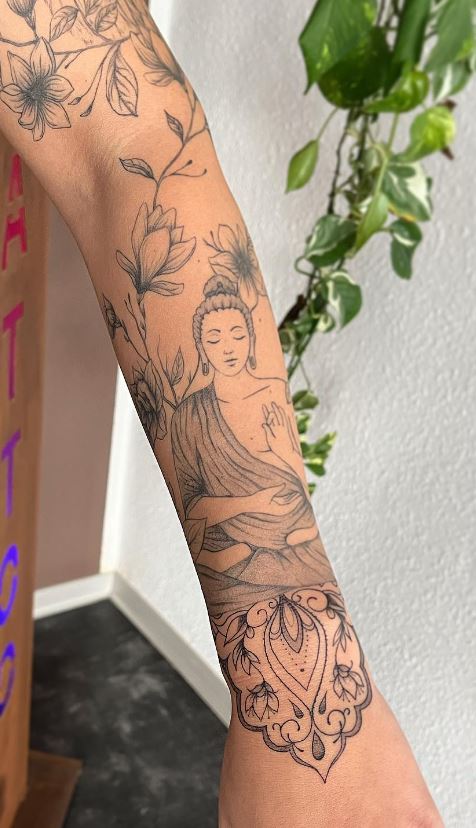
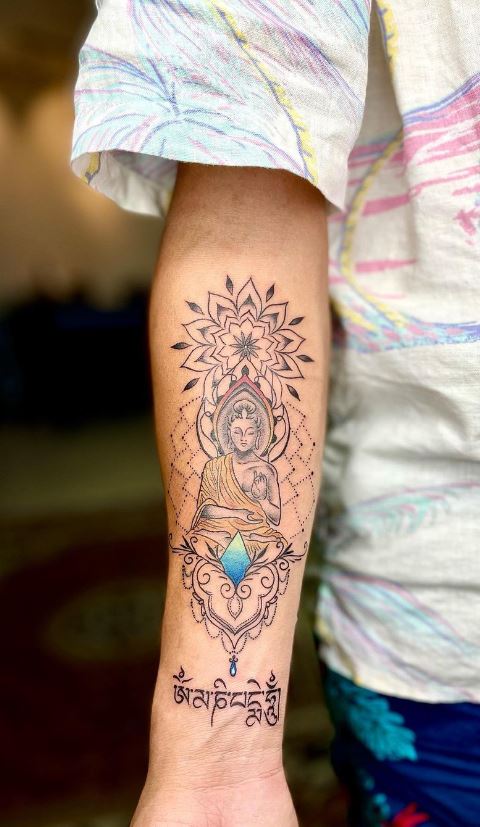
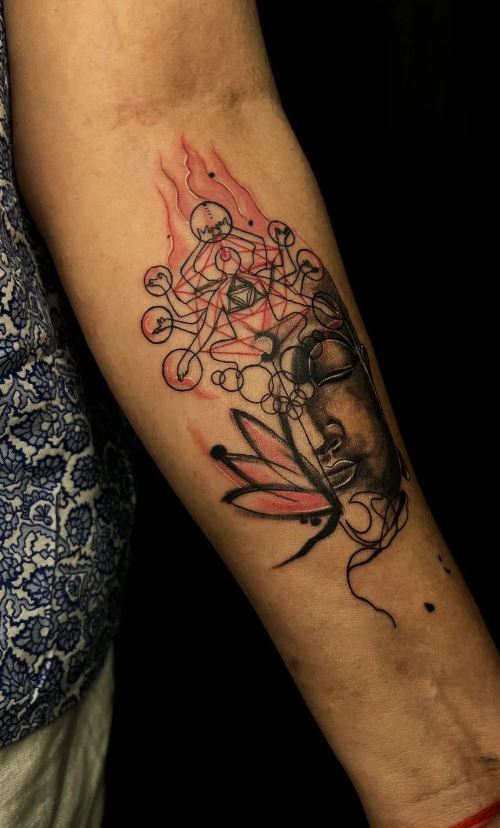
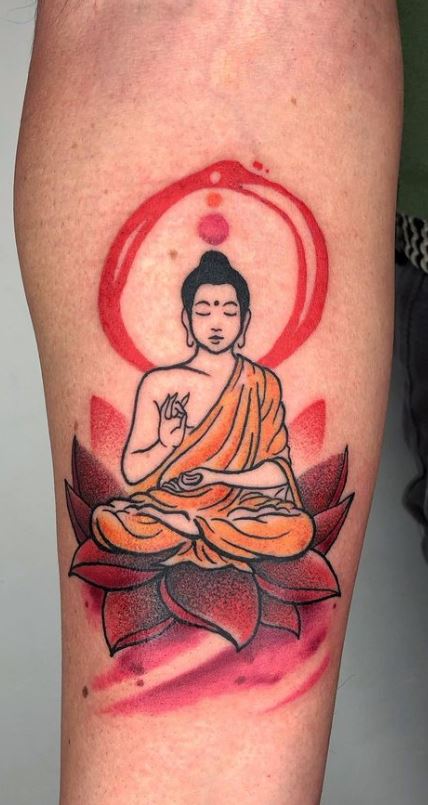
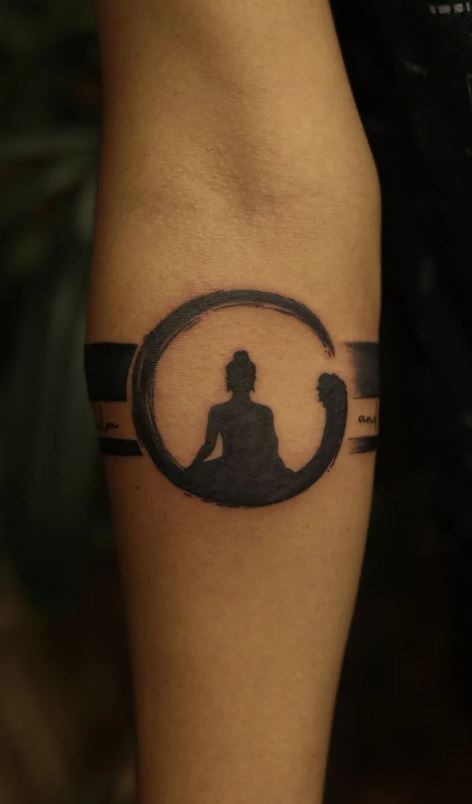

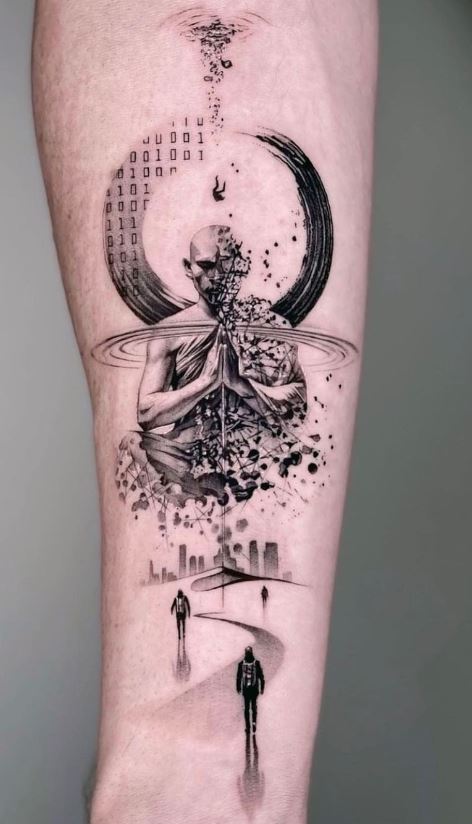
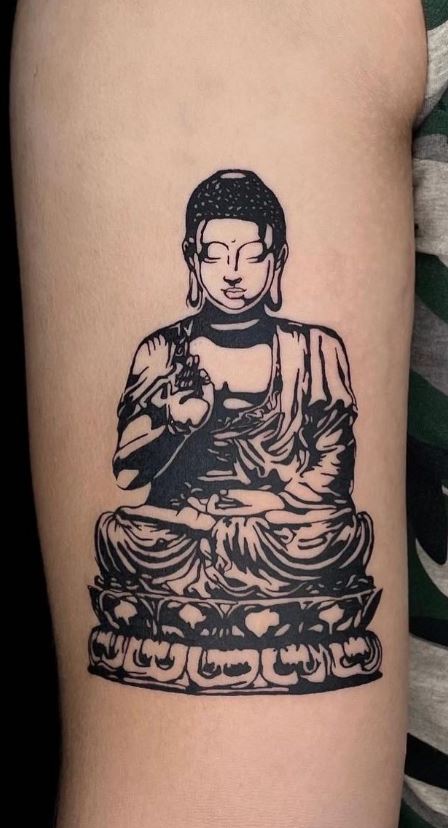
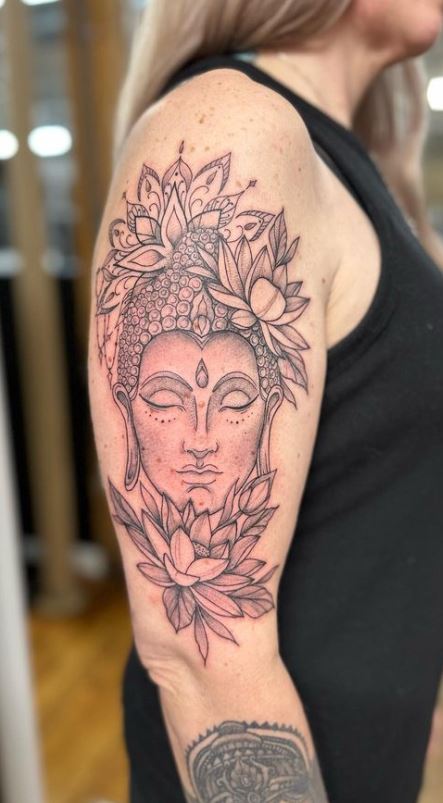
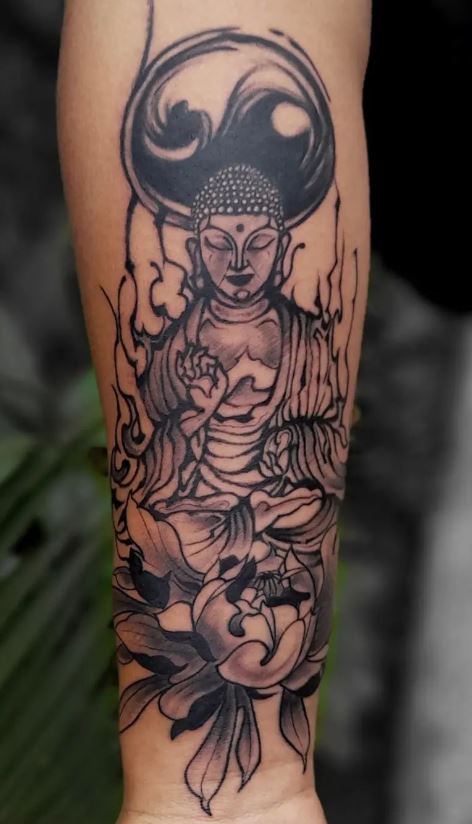
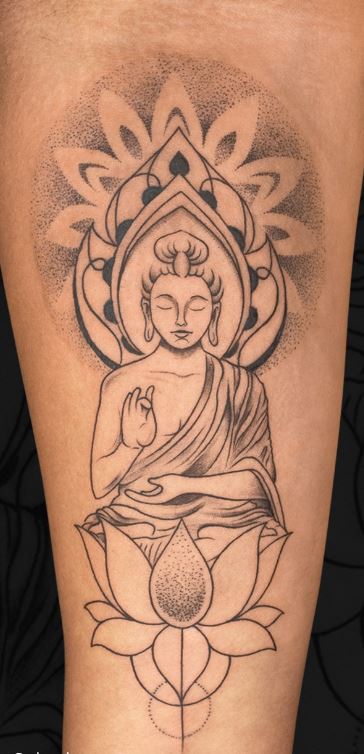
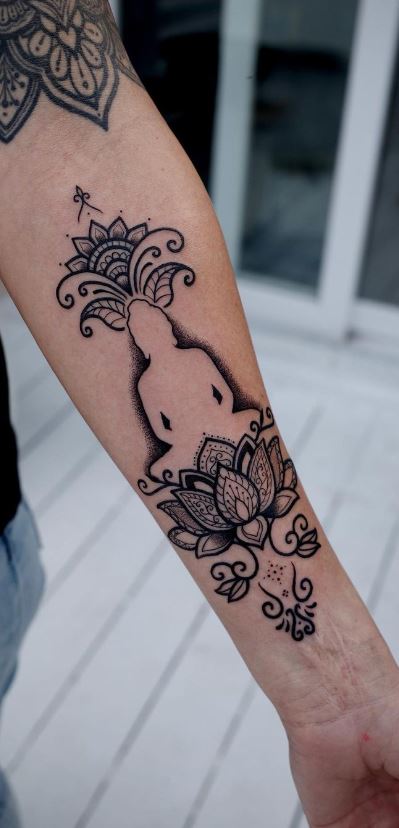
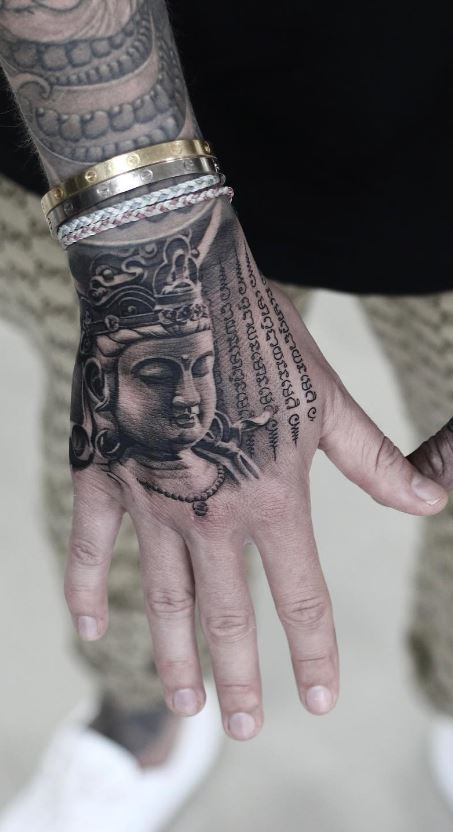
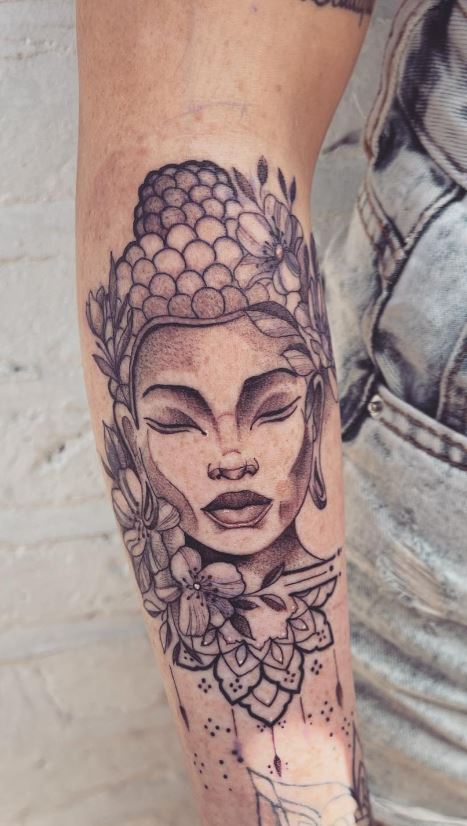
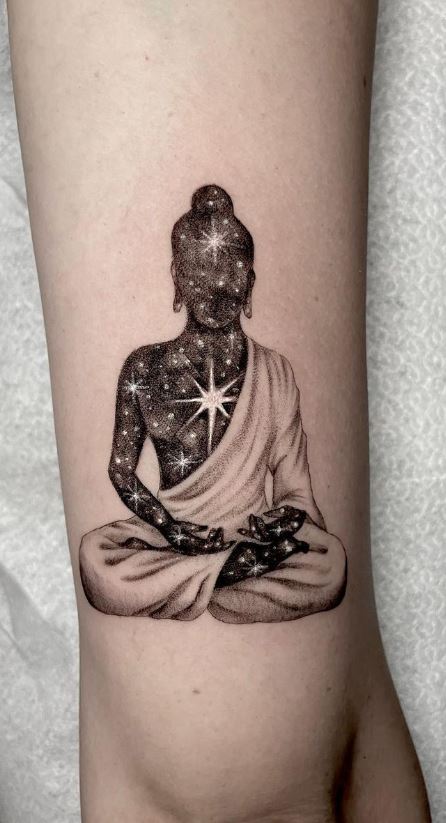
Buddha’s Teachings In Details
Buddhism is a religion and philosophy that originated in ancient India with the teachings of Siddhartha Gautama, also known as the Buddha. Buddhism emphasizes the importance of personal spiritual development and enlightenment through meditation and moral conduct. Here are some of the fundamental teachings of Buddhism:
Four Noble Truths
The Four Noble Truths form the foundation of Buddhist teaching and are Buddha’s first sermon. The Four Noble Truths state that life is full of suffering that desire and attachment cause this suffering, that it is possible to end suffering, and that the path to the end of suffering is the Eightfold path.
The Eightfold Path
The Eightfold path is a set of principles for living a virtuous and ethical life to end suffering and attain enlightenment. It consists of the right understanding, right intention, right speech, right action, right livelihood, right effort, right mindfulness, and right concentration.
The Three Universal Truths
Buddhism teaches that all things are impermanent, that all beings are subject to suffering, and that there is no permanent self or soul. These teachings emphasize the transitory nature of life and the importance of letting go of attachment and desire.
Karma
Buddhism teaches that an individual’s actions directly impact their future experiences and that good actions lead to positive experiences and bad actions lead to negative experiences. This concept of karma directly relates to rebirth and the existence cycle.
Compassion and wisdom
Buddhism emphasizes the importance of compassion and wisdom in leading a virtuous life. Compassion involves treating others with kindness and understanding, while wisdom involves developing insight and knowledge of the nature of reality.
Meditation
Meditation is an important aspect of Buddhist practice and a way to calm the mind, increase mindfulness, and develop insight and understanding. There are various forms of meditation in Buddhism, including mindfulness meditation, visualization meditation, and loving-kindness meditation.
These are some of the fundamental teachings of Buddhism. These emphasize the importance of personal spiritual development, ethical conduct, and enlightenment through meditation and compassion. The teachings of Buddhism have had a profound impact on cultures worldwide and continue to influence people seeking spiritual fulfilment and understanding.
Leave a Reply